MXA SHOOTOUT: THE REAL 2019 450 FOUR-STROKE SHOOTOUT
There are six machines in contention for the “2019 MXA 450 Shootout”: Honda CRF450, Husqvarna FC450, Kawasaki KX450F, KTM 450SXF, Suzuki RM-Z450 and Yamaha YZ450F. Yeah, we know we left the TM MX450-FI off the list, but if you knew how few MX450-Fis are imported to the USA every year, you’d understand. We don’t want to water down the “2019 450 Four-Stroke Shootout” by including a bike that isn’t available in large-enough numbers to supply a barbershop quartet. We also didn’t include the KTM 250SX, Husqvarna TC250, Yamaha YZ250 or KTM 350SXF for the simple reason that this is a “450 Four-Stroke Shootout.” Two-stroke and 350 riders know who they are and thus aren’t in the market for a 450cc four-stroke motocross bike. This shootout is for those who are!
We can promise you that one bike is going to win this shootout. We can also promise that we aren’t going to make everyone happy (the same is true about picking a pie at Marie Callender’s, choosing bedroom paint and deciding between spending the tax refund or putting it in the bank). So, whether you love shootouts or hate them (and we can’t help but notice what you are reading right now), you don’t have to rush out to buy the 2019 MXA 450 shootout winner. Instead, carefully read the information presented. Look closely at all six bikes in this test—and then look closely at yourself, your riding style and your real needs. You will find your winner, because the perfect bike for you is right here in the details on these pages.
Motocross Action is a true-to-life motorcycle magazine. Just as Bonnie and Clyde robbed banks, the MXA wrecking crew tests bikes. We test over 75 motocross bikes a year. It is a full-time job. The sheer number of machines we ride has taught us to take a straightforward approach to racing performance. And, make no mistake about it, we test by racing. What follows is a compendium of facts about the class of 2019.
WHO HAS THE BEST CLUTCH?
You may not give much thought to your bike’s clutch, until it starts slipping, but a good clutch is as important as a good engine. It doesn’t matter how strong your powerband is if it isn’t transferred to the rear wheel.
(1) KTM 450SXF. This is the best clutch in motocross. Thanks to its billet steel clutch basket (with the primary gear machined in as one solid piece), Belleville washer spring and flawless Brembo hydraulic actuation, no clutch can touch KTM on power transfer. The plates will last two to three times longer than any “Big Four” clutch (including the 2019 Kawasaki KX450 hydraulic clutch).
(2) Husqvarna FC450. The Husky has the second best clutch of the 2019 450s. You might think that it should tie with the KTM 450SXF clutch because they are identical. The FC450 does share the KTM’s basket, inner hub, pressure plate, fiber plates and steel drive plates, but not the hydraulic system. KTM uses a Brembo master cylinder and slave unit while Husqvarna uses Magura parts. The tactile difference between the KTM and Husky is that at the lever, the KTM clutch has a “pop” feel when it is pulled. The Magura lever is buttery smooth. It has a seamless pull. So, why is the KTM clutch better than the Husky clutch? Durability. We always remove the Magura piston and seal from the FC450’s slave unit and replace it with Brembo parts to avoid the possibility of a seal failure. For this reason, we rank the Husky clutch as second best behind the KTM’s, but way ahead of the Big Four’s.
(3) Yamaha YZ450F. Of all of the Big Four clutches, the Yamaha’s is the best. It lasts longer, works better, slips less and can take more abuse than the Honda, Kawasaki or Suzuki clutches. If you are a clutch abuser, consider running stiffer clutch springs (in whatever number suits the feel you are looking for).
(4) Kawasaki KX450. With the Kawasaki becoming the first Japanese-built motocross bike to update to hydraulics, we thought our KX450 clutch issues would be behind us. Not so. Our KX450 clutch squealed and faded, not because of the hydraulics but in spite of them. The hydraulics did not fix the shortcomings of the KX clutch. We not only replaced the clutch plates at abbreviated intervals but had to install stiffer clutch springs and remove the judder spring system to get full bite.
(5/tie) Suzuki RM-Z450 and Honda CRF450. Suzuki has no history of good clutches to fall back on. The Suzuki clutch has always crept on the starting line, slipped if you used it too hard and gone through plates like a bad juggler. If you use your clutch, you will use up an RM-Z450 clutch in short order. As for Honda, it once had the best clutches in motocross, but its last good clutch was made over a decade ago. We spent four years with the horrid four-spring clutch from 2009 to 2012. That has been followed by seven years of weak, judder-spring-equipped, slipping clutches that only work if you never pull them in. A powerful engine like the CRF450 is in dire need of a strong clutch to support it.
WHO HAS THE BEST BRAKES?
It is often said that “you can only go as fast as you can stop.” Not true. If your brakes don’t work at the end of a long straight, you’ll be going a lot faster than you ever dreamed. Good brakes equate to a longer lifespan, but also to more control in off-camber turns, the ability to go in deeper and a better chance at maintaining overall chassis control.
(1/tie) KTM 450SXF and Husqvarna FC450. The KTM 450SXF has had the best brakes for years. Brembo’s 260mm front rotor used to be the biggest rotor, but Honda, Yamaha, Suzuki and Kawasaki tried to catch up by one-upping KTM with 270mm rotors. Guess what? The bigger rotors do make their brakes more powerful, but at the expense of modulation. The 2019 Husqvarna FC450 has the same brakes as the KTM 450SXF, save for thicker GSK brake rotors (front and rear). Husky opted for strength over weight because of its enduro clientele.
(3) Honda CRF450. Honda updated its Nissin front brake caliper with one 27mm caliper piston and one 30mm piston. This vastly improved modulation and lessened the grabbiness (and is what Yamaha, Kawasaki and Suzuki need to do in order to bring the feel and control of their front brakes closer to Brembo usability). Over the years, KTM has altered the piston size in the master cylinder, brake pad material and caliper setup every other year—always trying to stay on top. Honda is the only Big Four brake trying to keep up.
(4/tie) Yamaha YZ450F, Kawasaki KX450 and Suzuki RM-Z450. The Big Four sat on their hands as KTM and Husky pulled away in the brake race. They just kept selling the same-old, same-old for a decade. Finally, rather than start from scratch, they dropped their 250mm rotors for bigger 270mm front rotors. The 270mm rotors did increase braking power; but, without redesigned calipers, the newfound power didn’t come with much control.
When it comes to rear brakes, there are big losers. Suzuki and Kawasaki have very finicky rear pedal adjustments. If you get them wrong, the rear brake will overheat, squeal and lock up. Worse yet, Kawasaki decided that the 2019 KX450 needed a more powerful rear brake. This is seriously flawed logic, because most rear brakes are already too easy to lock up. What they needed was a more progressive feel, not more clamping pressure. Kawasaki’s all-new, jumbo-sized, 250mm rear rotor is the same size as many front rotors were a few years ago (and 30mm larger than the 2019 KTM 450SXF’s 220mm rear rotor). The result is a disaster. The rear of the Kawasaki cannot be modulated. It grabbed, locked up and skidded in every hard-pack corner. It got hot from locking up and began chirping. It is a terrible rear brake. Our backyard fix was to grind the brake pads down on their ends so that the pads could contact the spinning rotors with a less harsh interface.
WHICH BIKE IS THE LIGHTEST?
Guess what Ken Roczen did to his works Honda CRF450 during the AMA Nationals? He had Honda remove the electric starter motor, battery, starter gear sets and wiring harness to save 5 pounds.
There are a lot of internet experts, pit pundits and “the world is flat” advocates who claim that weight doesn’t matter. Not a day passes that some Honda rider doesn’t claim that his CRF450 doesn’t feel heavy—and some that claim that heavier bikes handle better than light ones. Hogwash! When a two-wheeled vehicle is balanced on two wheels, it does feel light, until you lean it off center, lift one of the wheels off the ground or try to pick it up, then the tipping-point sensation of lightness disappears. When a 238-pound CRF450 lands from a jump, the tires, rims, spokes, fork springs and frame know how much it really weighs.
Ken Roczen understands that weight is more than a state of mind; it is a cold hard fact that puts more stress on the whole system. Here is how the 2019 450s rank on the scales.
(1) KTM 450SXF. At 223 pounds, the KTM 450SXF is the lightest 450cc motocross bike made. It actually gained 1 pound over last year’s model because of more gusseting in the head tube, a beefier top triple clamp and a longer swingarm. It is 18 pounds lighter than the heaviest bike in the shootout (Suzuki RM-Z450).
(2) Husqvarna FC450. The Husky tips the scales at 224 pounds (1 pound heavier than the KTM 450SXF). This can be attributed to the heavier plastic airbox, ice cream cone-shaped restrictor in the muffler and thicker brake rotors. It is 17 pounds lighter than the heaviest bike in the shootout (Suzuki RM-Z450).
(3) Kawasaki KX450. The KX450 is the lightest Japanese-made 450. At 233 pounds, the KX450 gained 2 pounds this year. This sounds bad, but it is a phenomenal achievement for a bike that added electric starting, coil spring forks and a hydraulic clutch. It is 8 pounds lighter than the heaviest bike in the shootout (Suzuki RM-Z450).
(4/tie) Yamaha YZ450F and Honda CRF450. The Yamaha and Honda tied for being the fourth-lightest bikes in this test. Both bikes hit the scales at 238 pounds and were both victims of being pushed into electric starting before they were ready for it. The CRF450 and YZ450F are 3 pounds lighter than the heaviest bike in the shootout (the Suzuki RM-Z450).
(6) Suzuki RM-Z450. Suzuki is caught between a rock and a hard place. Suzuki let itself fall so far behind in technological upgrades that it can’t afford the new engine, electric starting and refined package that it needs to stay abreast of the competition. The 2019 RM-Z450 is the only 450 that doesn’t have electric starting, but if Suzuki had it on the 2019 RM-Z450, the bike would weigh 246 pounds, which would be 23 pounds heavier than the 2019 KTM 450SXF. Losing weight is expensive because it means shedding ounces on every part.
WHO MAKES THE MOST POWER?
A lot of people have raced a slow bike to a better finish than they achieved on a fast bike. It’s not how much power you make but how you make the power that really matters; however, horsepower is what makes the wheels go around. It’s not the end-all, be-all, but it helps the end result.
(1) Honda CRF450. This is far and away the most exciting and powerful engine of 2019. Although it mimics the 2018 power output from idle to 8700 rpm, it is much stronger from 8700 rpm to sign-off at 11,500 rpm. Whereas the 2018 CRF450 power went flat after 8500 rpm, the 2019 makes 3 more horsepower at 9500, 10,000, 10,500, 11,000 and 11,500 rpm than the 2018 CRF450 engine. It is the only 2019 engine to crack 60 horsepower; it makes 60.21 horsepower (at 9500 rpm). Overall, this is the best powerband in the 450 class.
(2) Yamaha YZ450F. No secret; the 2019 YZ450F engine is unchanged from the 2018 model. The 2018–2019 engine has one continuous, smooth, controllable and long powerband. It isn’t demanding, but it is fast. At 57.51 horsepower, the 2019 Yamaha YZ450F makes the second-most horsepower of 2019.
(3) KTM 450SXF. The KTM 450SXF’s power pulls longer than any other engine on the track. It is ultra manageable and gets progressively faster as the rpm climb. It is unimpressive from low to mid, but meters out the power so that it is more usable over a longer time frame. It makes 57.14 in stock trim and 58.14 with holes drilled in the airbox cover.
(4) Husqvarna FC450. The 2019 Husqvarna has such a broad and easy-to-use powerband that it just might be the ultimate Vet powerband. It is not a fire-breathing beast of an engine. It makes its horsepower without any white-knuckle scariness. If you want more power, it is hidden inside the choked-up airbox and restrictor-equipped muffler. An enterprising Husky FC450 racer can get 57.50 horsepower with the airbox drilled, compared to 56.40 with the stock airbox cover.
(5) Kawasaki KX450. The 2019 Kawasaki delivers good but misleading vibes. It feels perky and powerful off the bottom and into the midrange, but in truth the 2019 KX450 makes less horsepower than the 2018 KX450 from idle to 9400 rpm. Then, above 9400 rpm, it takes off, which is why loyal KX450 riders like it so much. It revs. It pulls over the top, and it has quicker throttle response and lighter rev reaction than the old KX450. But, at 55.86 horsepower, it’s fifth in the horsepower rankings.
(6) Suzuki RM-Z450. There is something to love about the RM-Z450 powerband. It picks up cleanly off the bottom and has almost perfect midrange power placement. The problem? It doesn’t make comparable horsepower to the other five bikes in this shootout. And when it comes to top-end power, it’s batting zero. Its 54.39 horsepower at peak is almost 6 horses less than the class leader, and it goes flat at 8800 rpm. Even where we liked its power (low-end and midrange), it makes the least power.
WHICH BIKE HANDLES BEST?
Not all bikes handle the same—on purpose. There are three kinds of frames: sharp-turning, middle-of-the-road and neutral. Which one suits your riding style?
SHARP-TURNING BIKES: The Suzuki RM-Z450 and Honda CRF450 are chassis that give to get. With their rigid aluminum frames and corner-specific geometry, the CRF450 and RM-Z are Supercross-specific frames. They are at their best on the entrance of tight turns. The downside of building a sharp-handling chassis is that the bike can feel loose on exit, very busy on fast straights and shake its head in the rough. If you push the CRF450 in too deep, you to have to fight the understeer to keep it biting on exit.
The Suzuki has always been the sharpest turning bike, but in 2018 Suzuki over did it. It oversteered in, understeered out and oversteered when you corrected it. For 2019, there isn’t as much weight on the front wheel due to a lighter rear shock spring. This dulled its bad steering traits and balanced the bike out better, but we liked the more accurate 2017 frame. As for the 2019 Honda CRF450, it has a rigid frame with steep geometry and a potent powerband. Set it up wrong on race sag or fork height and you are in for an E-Ticket ride. It can be great on tight tracks, but it will never be stable at speed.
MIDDLE-OF-THE-ROAD BIKES: Kawasaki and Yamaha finessed their middle-of-the-road frames for 2019 by focusing on getting them to turn in. They aren’t Honda- or Suzuki-quick, but they didn’t want to be.
For 2019, Yamaha finally fixed its front-end wiggle. If you think Yamaha designed a new frame, you are wrong. In fact, there are no changes to 99.9 percent of the 2019 Yamaha YZ450F. The 0.1 percent change is to the wheel collars and the front axle lugs. Yamaha fixed the wag, wiggle and wander by stiffening the connection to the front wheel. Nothing more! Always stable at high speed, the bike can now turn in.
Kawasaki has been inching away from its upright steering sensation for a few years, but for 2019 it completed the transformation. The 2019 Kawasaki can turn in with confidence, but most important it stays planted on turn exit better than the Yamaha, Honda or Suzuki. It doesn’t hurt that the KX450 is 5 pounds lighter than the closest Japanese-built bike. When you are leaning into a rut on the edge of the balance point, 5 pounds is a big deal. We rate the KX450 handling ahead of the YZ450F.
NEUTRAL NO-FUSS CHASSIS: The KTM 450SXF and Husqvarna FC450 are the only chromoly frames in the 450 class. For 2019, their torsional rigidity was increased by 10 percent. Fast riders thought the 2019 Austrian bikes were more accurate, while Vet riders preferred the previous year’s more resilient frame. The KTM/Husky frame is very balanced. It doesn’t deliver a lot of unnecessary movement, fore/aft teeter-totter or chassis twist under acceleration. It is nicely balanced and needs no body English to make things happen. It does it all. It can turn, and it’s accurate in the rough and super stable at speed. Not exciting but businesslike.
WHO HAS THE BEST SUSPENSION?
This is a very straightforward category. It has one obvious winner.
(1) Yamaha YZ450F. Yamaha’s Kayaba SSS suspension, front and rear, is the best setup of 2019. It has been the best since 2006. For 2019, Yamaha added a stiffer shim stack to allow the forks to stay higher in their stroke, especially under heavy braking, yet feel plush. They are devoid of harshness. These are the perfect coil spring forks.
The YZ450F shock has new damping and a stiffer shock spring. We thought the stock spring would be too stiff for light riders, but it was an improvement for all size riders. Riders from 140 pounds to over 210 pounds can find their sweet spot in stock trim.
(2/tie) KTM 450SXF and Husqvarna FC450. We like that AER air forks can be set up for different conditions with just a few adjustments. We had no problems making Intermediate and Pro riders happy; the trouble arose with Vet and light riders. They complained about harshness at the end of the stroke. We feel this is due to the more rigid frame, as it made us go softer to get the same plushness we had with the 2018 chassis. In response, we ran lower air pressures, as low as 133 psi (stock is 154 psi), with the compression clicker between 25 and 35 clicks out. If that didn’t fix the harshness, we removed 10cc of oil from the damping leg only.
This is the best WP shock that we have ever ridden with. We set the race sag at 105mm and went in on the high-speed compression and rebound. We were impressed.
(4) Kawasaki KX450. The KX450 shares the basic Showa forks with Honda and Suzuki, but it is a much plusher fork than the other two. The spring rates on all three are 5.0 N/m, but the KX450 feels suppler because the fork oil height is lower. The KX450 forks are forgiving over small bumps but way too soft in the big stuff. The compression and rebound can help, but they are not a cure-all, as the soft forks make the balance of the bike feel off. Our simplest fix was to run one stock 5.0 N/m spring with one optional 5.2 N/m spring to make a hybrid 5.1 N/m spring that helped the forks ride higher in the stroke and balance out the chassis. There was still a bit of harshness in the middle of the stroke that we couldn’t iron out.
The rear shock is on the stiff side and overpowers the stock soft front forks, especially under hard braking—which aggravates the front more than the rear. The fix is to leave the rear shock alone and stiffen the forks.
(5) Suzuki RM-Z450. These are the same forks and valving as last year; however, they don’t ride as low in the stroke and feel plusher. How? The rear shock spring is lighter—going from a 54.0 N/m in 2018 to a 52.0 N/m spring rate in 2019. This allowed the rear to drop down and take weight off the forks to balance out the chassis.
The changes made to the 2019 Suzuki BFRC shock are a big improvement over the 2018 shock setup. We had to drop the sag down to 108mm to balance out the rear with the front. The softer and shorter rear shock spring takes a lot of load off the touchy front end and allows the Suzuki to absorb the small stuff that it ignored in 2018.
(6) Honda CRF450. These forks are decent for light and slow riders and work well on some tracks, but the forks ride low in their stroke, giving up the easy travel to sit on a harsh spot. The rigidity of the frame and stinkbug stance aren’t easy problems to solve. We slapped last year’s 2018 CRF450 Showa forks on our 2019 machine. This helped balance out the chassis and brought the forks up in the stroke so they weren’t riding in the harsh spot as much. Even though the forks are the same internally, Honda used a fork oil that has less stiction.
The CRF450 rear shock is very touchy to set up. We set race sag from 106mm to 110mm on the CRF. Then, we slid the forks down into the clamps to balance out the chassis. Please note: any change to the shock seriously affects the forks.
THE GOOD, THE BAD & THE INDIFFERENT
HONDA CRF450
What we hate:
1. Clutch. The clutch is weak. Get rid of the judder spring and small plate.
2. Radiators. It overheats and boils water like a teapot as dirt gets stuck in the radiator guards.
3. Exhaust. Can’t complain about the horsepower, but we don’t give any of the credit to the twice pipes. We also don’t like how far the head pipe sticks out. Some riders hit it when they put their leg out.
4. Handling. It likes to turn but is very busy between corners.
5. Weight. 238 pounds is exactly 15 pounds too much.
6. Sound. On the 2-meter-max sound test, it blew 117.5 dB. That’s loud, but it passed the 94 dB Amateur sound test.
7. Setup. We never had as much trouble getting a chassis to work in conjunction with the engine and suspension. This is a very sensitive bike.
8. Forks. The fork aren’t as soft as the KX450 forks, yet they don’t have good bottoming resistance. Nobody likes to feel that harsh bottoming sensation.
What we like:
1. Horsepower. It is obvious that Honda is over their “slow-is-better” phase. With 60.21 horses, it is an awesome engine from bottom to top.
2. Ergos. Nothing feels as nice, comfy and well-laid-out as a CRF450.
3. Electric starting. Ken Roczen dropped it for the weight, but we’ll keep it for the ease of use.
4. Maps. We like the maps, but we always ran the stock one. The aggressive map felt crisper but actually gave up one horse everywhere.
5. Handlebars. Lower is better. The oversize Renthal FatBars mean adios to 7/8th inch bars.
6. Launch control. This is the first time that Honda added launch control. It is overly complicated but offers three different settings.
HUSQVARNA FC450
What we hate:
1. Exhaust. What is an ice-cream-cone-style restrictor doing in the muffler? It makes it more manageable than the KTM but restricts the power everywhere.
2. Airbox. We love the air filter system but think the airbox is choked down. We drill holes.
3. Graphics. What graphics?
4. Clutch. We don’t trust the Magura slave unit seal and replace it with a Brembo on day one.
5. Frame. The more rigid frame is not good for mere mortals. We have to go softer on the suspension settings than we did last year to get the same comfort level.
6. Airbox cover. It comes off without tools, but it’s length means you really have to tug it hard (and sometimes the insert receiver pops out—we carry spares).
What we like:
1. Transmission. Who wouldn’t want a transmission built by Formula 1 supplier Pankl?
2. Cylinder head. The 15mm lower Husky/KTM cylinder head is a giant step forward in lessening cam twist. It also makes the bikes feel lighter in the air as the weight is lower in the chassis.
3. Sound. The Husky is the quietest production 450. It was only 111.4 dB on the 2-meter-max sound test and 93.2 dB on amateur sound test.
4. Weight. At 224 pounds, it is the second lightest 450 on the track.
5. Electric starting. You can’t give credit to Honda, Yamaha and Kawasaki for having electric starting without giving credit to the bike that got there first.
6. Radiators. The radiators are mounted 12mm lower on the frame, and the water capacity is up 20 percent.
7. Handlebars. Every test rider liked the new ProTaper handlebar bend.
8. Maps. Even though the black box is the same on the 450SXF and FC450, the two maps feel different. We were told that the black box was tuned to the FC450’s ice-cream-cone restrictor muffler, which explains why we liked the FC450 maps better than the KTM maps.
KAWASAKI KX450
What we hate:
1. Clutch. Although the KX450 now has a hydraulic clutch, it doesn’t mean it will stand the test of time. The KX450 clutch is weak. It feels light to the touch, but it burns up if you use it. Plus, it makes a horrendous squealing sound. We got rid of the judder spring, installed stiffer clutch springs, polished the ends of the push rod and switched to an ARC PowerLever (which has six different hydraulic ratios to insure that the clutch is diengaged before the lever hits your fingers on the handlebar).
2. Fork springs. Too soft but great if this were an enduro bike.
3. Airbox. It’s weird, small and tight, and it takes two different wrenches to get the cover off.
4. Seat bolt. When you remove the seat bolts, the threaded plates fall out of the rear fender.
5. Rear brake. The 250mm rear rotor is overkill. It locks up in every corner. We cut threads off the master cyllinder push rod and ground the rear brake pads down.
6. Shock preload ring. We hate KTM’s nylon preload ring. Guess what? Now we hate Kawasaki’s and Suzuki’s nylon preload rings also.
7. Levers. For some unknown reason, the clutch and brake levers are completely different, as though they came off different bikes. When the clutch was pulled in, the lever hit riders’ fingers. We moved the clutch perch over to avoid this, but it was only a modest help. Eventually we switched to ARC levers on both sides.
8. Handlebars. The KX450 is the last production 450 with 7/8-inch bars.
9. Grips. The hard rubber grips tear up your hands.
10. Radiator cap. The engine runs hot and boils over. We run a Twin Air 1.8 radiator cap to keep it cool (this is a mod that all four of the Japanese-built bikes could benefit from).
11. Chain roller. The bottom chain roller wears out (well, in truth it disintegrates). We use a 2018-19 KX250F chain roller to fix the issue.
What we like:
1. Maps. Take our word for it, the green coupler offers the best ECU map. It is stronger than the black coupler and is less hyperkinetic than the white coupler. If you want to remap the black box, below is are the maps we ran.
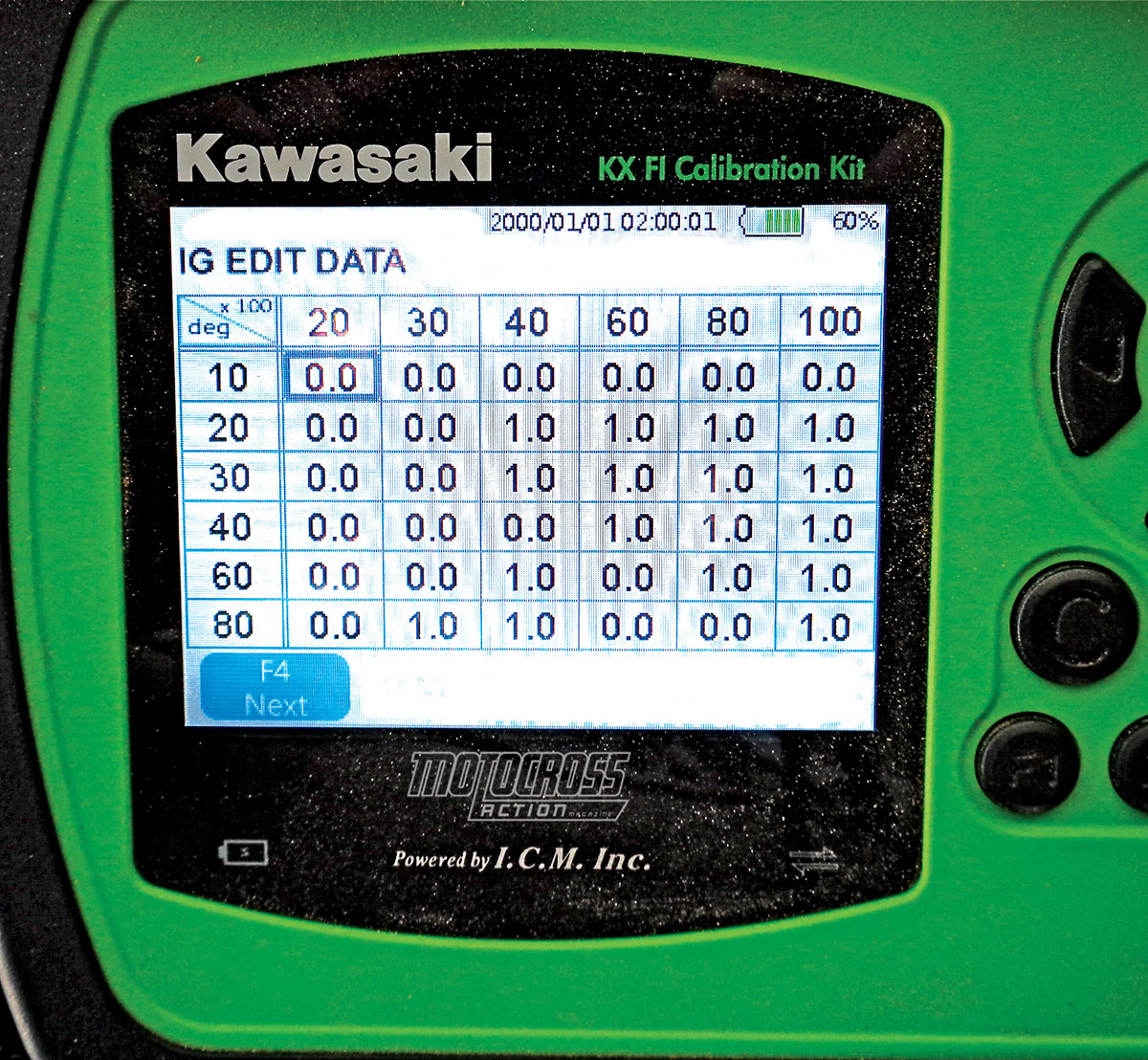 MXA’s 2019 KX450 ignition map.
MXA’s 2019 KX450 ignition map.
3. Sound. It passed the 2-meter max test at 114 dB and the amateur sound test at 94 dB.
4. Weight. It may be 10 pounds heavier than a KTM 450XF, but it doesn’t feel like it. The KX450 feels light in the air and is easier to jump from line to line than the lighter FC450 and 450SXF.
5. Electric starting. Kawasaki added 3 pounds of coil springs and 5 pounds of battery and starter motor but only gained 2 pounds of overall weight.
6. Plain bearings. Borrowing a page from KTM, Kawasaki adopted plain bearings on the connecting rod.
7. Powerband. The power is livelier, quicker and more responsive than last year’s engine, but the KX450 actually makes less power than the 2018 KX450 up to 9400 rpm. Then it takes off.
KTM 450SXF
What we hate:
1. Powerband. Initial throttle response is quicker, but the power gain from low to mid is slower.
2. Airbox. We have never experienced a KTM that didn’t breathe, but the 2019 450SXF’s all-new airbox holds the engine back— especially in the low-to-mid transition. We drilled holes in the airbox cover to gain power, switched to the quick-turn throttle cam and added a tooth to the rear sprocket to liven things up.
3. Sprocket. Watch the sprocket bolts closely—and not just when the wheels are new. They loosen up constantly.
4. Spokes. KTM redesigned its spoke nipples for 2019 to keep them from coming loose. It didn’t work.
5. Frame. The more rigid frame makes the bike more accurate but less forgiving—it is best in the hands of faster riders. Vet test riders liked the 2018 frame better.
6. Bars. Most riders did not like the feel of the Neken bars compared to the Husky’s Pro Tapers.
What we like:
1. Transmission. Not just better gears but Pankl gears.
2. Exhaust. We love the slip-fit in the mid-pipe that allows us to remove the shock without having to remove the pipe.
3. Clutch. Nothing holds a candle to the Brembo clutch.
4. Cylinder head. Lowering the head by 15mm means that the cam is lower, cam towers are stronger, valve stems are shorter and weight is reduced by 1 pound. Lowering the center of gravity made the bike feel lighter in the air.
5. Sound. The KTM blew a nice 113.0 dB on the 2-meter-max test and 93 dB on the Amateur sound test.
6. Weight. The 223-pound 2019 KTM 450SXF is lighter than several 250 four-strokes (and all the other 450s).
7. Electric starting. KTM has had electric starting for 20 years.
8. Radiators. The radiators are 12mm lower and the chassis is narrower at the fuel tank.
9. Air filter. Until you see a KTM air filter, you can’t appreciate how cool it is.
SUZUKI RM-Z450
What we hate:
1. Clutch. This is less of a clutch and more of a throw-out bearing.
2. Cornering. The Suzuki has a reputation as the sharpest-turning bike on the track; however, Suzuki messed with success and tried to make it turn even sharper in 2018 and 2019. No bueno! The softer rear spring makes the 2019 RM-Z feel more like the 2017 model than the 2018. Last year, the RM-Z450 oversteered in, understeered out and needed to be corrected to go straight. Those traits are a little less noticeable for 2019.
3. Straight-line stability. This is a turn-at-all-costs chassis. It is much better overall this year, as more weight is towards the rear of the bike, but we still put on a St. Christopher medal before going down a fast and rough straight.
4. Horsepower. At 54.39 horsepower, the RM-Z450 makes the least power of any 450. It is almost 6 horses less than the 2019 Honda CRF450.
5. Kickstarter. It doesn’t have electric start, which is a shame because the kickstarter is mounted very high on the engine cases and requires a full throw to light up the engine.
6. BFRC shock. This rear shock isn’t ready for prime time, and we doubt that it ever will be (and we doubt that Suzuki will replace it with a traditional shock). We ran a WP aftermarket rear shock.
What we like:
1. Power placement. The Suzuki power is perfectly placed in the meat of the powerband. It may not be very powerful but it is usable.
2. Ergos. The layout is sleek, albeit tall, top-heavy, rigid and tippy.
3. Tires. Suzuki spec’ed Bridgestone X30s front and rear. We would prefer an X30 front mated to an X40 rear.
4. Maps. Just run the stock map; it’s better than Suzuki’s aggressive and mellow maps.
5. Suspension. The forks and the BFRC rear shock work more in unison than they did last year. Thanks to a softer and shorter shock spring, the rear of the RM-Z450 doesn’t wallow as much as the 2018 RM-Z450.
6. Price. At $8940, the 2019 RM-Z450 has the lowest MSRP of any 2019 450. It is $350 cheaper than the Honda, Kawasaki and Yamaha.
YAMAHA YZ450F
What we hate:
1. Seat foam. Yamaha made a big deal about its 16-percent-denser seat foam. We had to replace our 2019 seat after 10 hours because the foam broke down.
2. Ergos. Even though it is thinner than it was two years ago, it is a big, bulky, wide and heavy bike.
3. Weight. You can feel the 238 pounds any time you lean the bike over.
4. Blue rims. We prefer silver rims. Blue rims belong on a TM. We don’t hate that the rims are anodized a color, just that dark-colored rims end up looking like salt and pepper in a short time. Black and blue rims get scratched up by tire irons and chipped by roost. With silver rim, you don’t see the damage.
5. Handlebar height. The handlebar mounts are too tall; switch to the 5mm lower bar mounts from the 2017 YZ450F.
6. Air filter. The filter should not lie on top of the backfire screen. Why not? The pulsing engine sucks the filter oil downward and dirt follows it. A Twin Air air filter Band Aids the issue.
7. Noise. With the airbox mounted where the gas tank would normally go, there is a lot of noise that wasn’t there when that space was just gasoline.
What we like:
1. Gearing. Last year, we switched the stock 48-tooth rear sprocket for a 49. For 2019, Yamaha adopted the “add one tooth on the rear” solution.
2. Cheap R&D. Honda, Kawasaki, KTM and Husqvarna built new bikes; Yamaha changed the wheel spacers and fork lugs and made the biggest improvement they’ve made in years to the steering response. Thanks to the axle lugs, it doesn’t wiggle at turn-in.
3. SSS. Yamaha has the best coil spring forks in the biz. Heck, they have the best forks, coil spring or air, in the biz.
4. Reliability. Nothing is as reliable as a Yamaha YZ450F. It will last forever.
5. Wi-Fi mapping. You can remap your 2019 YZ450F with your iPhone. We run the Travis Preston map. You can see the Travis Preston maps below.
 The 2018-2019 recommended Travis Preston YZ450F fuel and ignition maps.
The 2018-2019 recommended Travis Preston YZ450F fuel and ignition maps.
6. Plastic pieces. We used to catch our boots on the pointy end of the right side panel. For 2019, Yamaha put a hook on it to hold it down better.
7. Clutch. We run stiffer clutch springs just to ensure proper hook up, but this is the best of the Japanese clutches.
8. Electric starting. Once Suzuki sees the light, kickstarters will be a thing of the past. The YZ450F’s electric starter fires up faster and quicker than the rest.
9. Engine. This is a powerfully smooth engine that every test rider enjoyed. We just don’t like the way the stock map falls off on top. This makes a lazy rider have to shift or all his weight will move forward.
2019 MXA 450 FOUR–STROKE SHOOTOUT SCOREBOARD
This is the section where we tell you where the six most popular 450cc four-stroke motocross bikes rank on the MXA test riders scale. You won’t hurt our feelings if you buy the fourth, fifth,sxith or 22nd bike on the list—but read each analysis before plunking down your cash.
FIRST PLACE: KTM 450SXF
We will be the first to tell you that the 2019 KTM 450SXF is inferior to the 2018 KTM 450SXF in many ways. The 2019 model has a lag off the bottom due to a closed-off airbox, and the frame is stiffer than it needs to be. If you are a Pro, you will like the stiffer frame better than last year’s more forgiving chassis. Plus, Pros are fast enough to jump over the slow power build-up off bottom as they don’t ride that low in the powerband very often. Paradoxically, slow riders like the slow build-up because they ride there more often.
So, if the 2019 model is worse than the 2018 model, why did it win? Believe us when we tell you that we struggled with it. We were upset that KTM messed up the low-end power transition, but not badly enough to knock it off the top spot. Why not? To fix the lack of bottom-end power, all you need is to drill holes in the airbox and install the quick-turn throttle cam that comes with the bike. If you already own a drill, it won’t cost you a dime to bring back the low-end grunt of last year’s 450SXF.
The peanut gallery likes to root for the perennial winner to lose. It’s human nature. Tom Brady has enemies. Louis Hamilton has enemies. The New York Yankees have enemies. And KTM has enemies. However, to choose any other brand as the 2019 winner would require the MXA test riders to ignore the superior brakes, bulletproof clutch, design innovations, light weight, wide powerband, adjustable suspension, sleek ergonomics and no-fuss handling. It’s no secret that it will cost you a lot of money to fix the flaws of the FC450, CRF450, YZ450F, KX450 and RM-Z450 to make them better overall bikes than the 2019 KTM 450SXF. If our friends asked us which 2019 450cc motocross bike they should buy, the KTM 450SXF would be our answer. Like it or not, the KTM 450SXF is the 2019 450 shootout winner. Full test of the 2019 KTM 450SXF.
SECOND PLACE: HUSQVARNA FC450
The Husqvarna FC450 could have won this year’s shootout, but rather than making the FC450 feel more distinctly different from the KTM 450SXF it is based on, the Husky engineers made the two bikes more identical than ever. The seat is no longer square. The plastic subframe isn’t as resilient, and the airbox isn’t as bulky in the rear anymore. When you sit on the orange and white bikes, they feel identical—save for the bar bend. Most MXA test riders liked the feel of the Husky bar bend and optional maps better than those on the 450SXF units. The biggest difference is that the Husqvarna power feels mellower, which lots of test riders liked because it was ultra-smooth; however, Husky didn’t fix the Magura clutch problem from last year. The slave seal often fails—forcing us to replace it with a Brembo piston from the KTM parts book. The ice-cream-cone restrictor in the muffler is a crime against humanity. What is it doing in there? It costs the FC450 almost a full horsepower compared to the KTM at peak. As on the KTM 450SXF, we drill holes in the airbox to give it more power across the board, but we’ve been doing this to Husqvarnas for a few years now.
We aren’t conspiracy theorists, but we have to wonder if KTM/Husqvarna owner Stefan Pierer’s engineers aren’t handicapping the Husqvarna FC450 so it doesn’t perform better than the KTM 450SXF. If we were in Stefan Pierer shoes, we’d have the Husqvarna engineers on the hot seat explaining the mysteries of the choked-up airbox, faulty Magura component and ice-cream-cone restrictor. This is a great bike if you drill out the airbox, install a Brembo slave piston and add a slip-on muffler (or even borrow a restrictor-less FC250 muffler). Full test of the 2019 Husqvarna FC450.
THIRD PLACE: YAMAHA YZ450F
This is the best version of the YZ450F ever made. Along with its ultra-durability, it has the best suspension in the class by far. You can be slow, fast, fat or skinny, and the YZ450F SSS components will work for you. This is the easiest bike for a racer to set up to suit his weight speed and style. What is most shocking about the 2019 Yamaha YZ450F is that it is basically the exact same bike that finished fourth in last year’s 450 shootout. We downgraded it last year because the front end would wander, wiggle or wag in corners. It turned-in okay but was exceedingly loose from center out—to the point of being twitchy at speed. So, what changed our minds in 2019? Yamaha added beefier fork lugs and stronger wheel collars. Nothing else! It is the 2018 Yamaha YZ450F but with a stiffer connection to the front wheel.
It is hard to believe that such small changes would bring about such a sea change in YZ450F steering response. Gone is the wiggle. Gone is the wag. Gone is the looseness on exit. This small fork lug change stiffens up the front wheel to allow it to follow the chosen path without deflection. With that problem fixed, the rest of the Yamaha YZ450F package came into focus.
Unfortunately, there is no getting around the fact that it is a big bike—tall, bulky, wide, noisy and heavy. To make the 2019 YZ450F better, you will need 5mm lower bar mounts, aftermarket seat foam, the Travis Preston map and an air filter that doesn’t beat itself to death on the backfire screen (call Twin Air). Once you’ve fixed these things, you still have a bike that is 15 pounds heavier than the class front runner. Ask yourself, “Would you race your YZ450F with a 5 gallon enduro fuel tank on it?” Yes or no? Because that is what that extra 15 pounds makes the YZ450F feel like. Full test of the 2019 Yamaha YZ450F.
FOURTH PLACE: KAWASAKI KX450
There were moments during MXA’s several-month-long 450 shootout period when the 2019 Kawasaki was the front runner for first place. It is by far the most improved bike of 2019. Every test rider enjoyed the deceivingly fast engine, light-feeling chassis, clean ergos and nice design touches, but, and this is a big but, it is a “first-year model.” First-year models always have teething problems, and the more we raced the 2019 KX450, the more the problems came to the surface. Those problems began to sap our enthusiasm for the Kawasaki KX450. Even though we still liked it, we liked it less and less when the clutch kept burning through plates (hydraulic or not), the over-size rear brake locked up at the least opportune times, the forks bottomed because of the soft fork springs, the bottom chain roller self-destructed, and we realized the airbox design was convoluted. There is one caveat to all of this. If you feel that you can live with the flaws, chase down solutions and stay on top of the maintenance, then go for it. It is the lightest of the Japanese-built bikes.
The 2019 Kawasaki had the potential to win the 2019 MXA 450 shootout, but it has another year of development in the cards before it can get the top spot. When you pay $9299 for a bike, you don’t want to have to become an unpaid member of Kawasaki’s R&D department. The KX450’s engineers should have polished the ends of the clutch push rod. They should have dialed-in the rear brake issues. They should have spec’ed the correct spring rate. They should have given it more horsepower—instead of just enough to keep it out of the cellar. And with a few massages at the factory, it will be worthy in 2020. Full test of the 2019 Kawasaki KX450.
FIFTH PLACE: HONDA CRF450
If this were a 125 or 250F shootout, horsepower would trump everything else. In the little bike classes, power is the most important factor in choosing a winner; however, in the 450 class, it is less important. By no means is it the least important factor, but power placement often overrides power output. So, if we used the 125/250F shootout criteria on the 450 shootout, the 2019 Honda CRF450 would be the hands-down winner. For any rider who is looking for sheer power, the CRF450 has it. It is the only 2019 450 engine to crack 60 horsepower on the dyno. Those would have been factory engine numbers a few years ago. Best of all, the Honda doesn’t give up usability to reach for the sky. The 2019 CRF450 produces great power from bottom to top. The 2019 Honda engine gets an almost 3 horsepower head start on every other bike.
It sounds great, doesn’t it? Guess what? No matter what level rider you are, the clutch won’t stand the test of time. Stiffer springs will help, but the real fix is a complete Hinson or Rekluse clutch (which will cost around a grand). The rigid aluminum chassis is very busy under the load of the added horsepower. The forks are mediocre. Finding good balance between the front and rear can become a full-time job, especially as the track changes over the course of a day. The 2017–2019 chassis is very hard to find a comfortable setting on. This has a lot to do with the Honda engineers’ selection of the Showa fork valving, chassis rigidity, shock linkage rising rate, borderline front-end geometry and stinkbug stance. The CRF450 is fun, fast and exciting. It is heavy at 238 pounds but feels light in the air. On the downside, control is hard to come by on a bike that is loose on exit, prone to breaking the rear loose on corner exit and needs 108mm of race sag (and the forks slid down in the clamps) to bring it into balance. Full test of the 2019 Honda CRF450.
SIXTH PLACE: SUZUKI RM-Z450
The 2019 Suzuki RM-Z450 is 10 percent improved over last year’s offering. The sad fact is that even if Suzuki’s engineers could have made the 2019 Suzuki RM-Z450 25 percent more ridable than last year’s model, it still would have trouble getting out of last place in the standings. It is that far behind the eight ball. Suzuki made the 2019 RM-Z450 a much more ridable bike than the 2018 by trying to make the rear shock more responsive to bumps. But, it has a long way to go. What would Suzuki need to do to change its fortunes in the 450 class? The RM-Z450 has to lose beaucoup pounds (it needs to drop 18 pounds to match the KTM 450SXF), add electric starting (as it sits, that would result in an unacceptable 246-pound bike), get rid of the weird BFRC shock (or make it work when changing directions in the rough), design a totally new engine (not just because the current engine is the slowest in the class, but because this powerplant is an ancient mariner), build a clutch that maximizes power (instead of slip), and find engineers and test riders who prioritize balance over partial fixes.
The MXA test riders didn’t mind riding the 2019 Suzuki RM-Z450, but not a single test rider would choose to race it. It is the heaviest, slowest and twitchiest bike on the track. It makes the least horsepower, has a marginal clutch and the worst rear shock—even its kickstarter design has flaws (it is way to high). The best thing about the 2019 RM-Z450 is the way the power is delivered. It is spot-on in the middle. It makes the meager output much more effective and usable than the numbers would predict. As a budget racer, it features the lowest out-the-door price of all the 2019 450s. Conversely, it has the lowest resale value.
MXA 450 SHOOTOUT ADDENDUM
 And there you have it. All that’s left is the horsepower, torque, bike weights and prices.
And there you have it. All that’s left is the horsepower, torque, bike weights and prices.


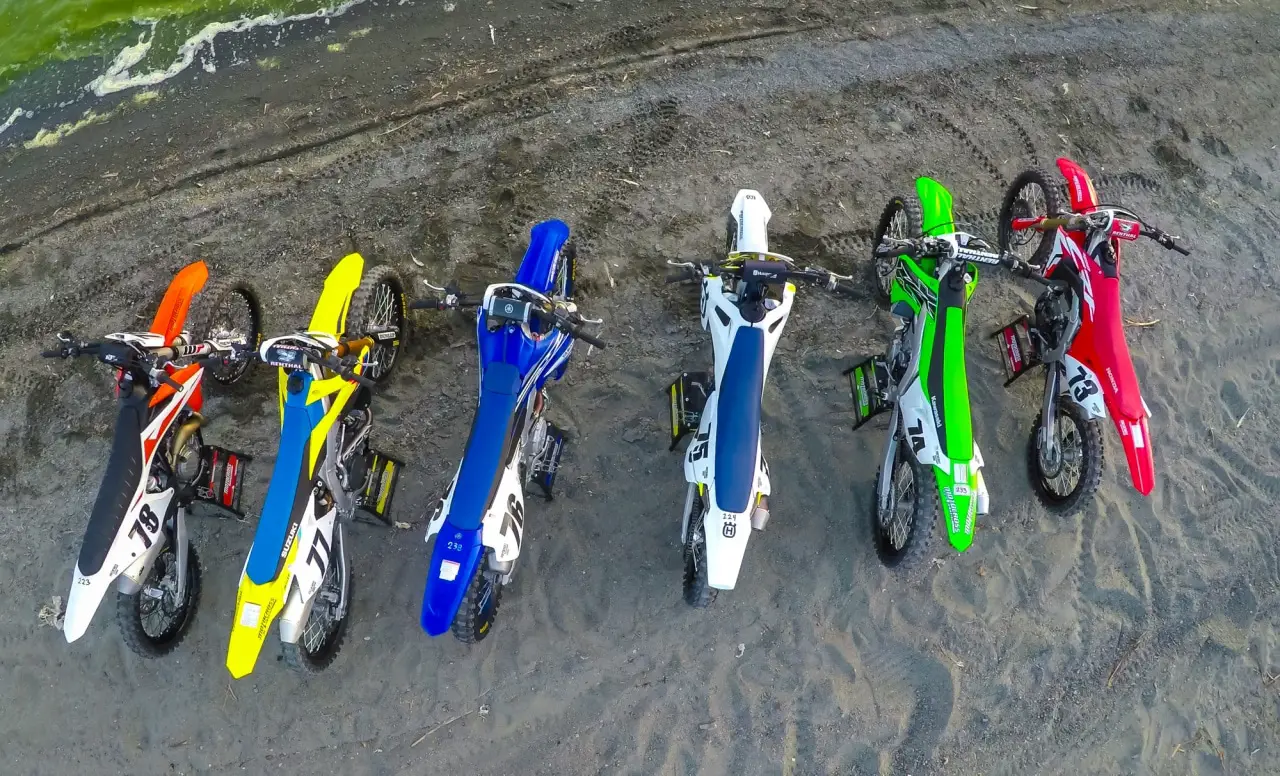
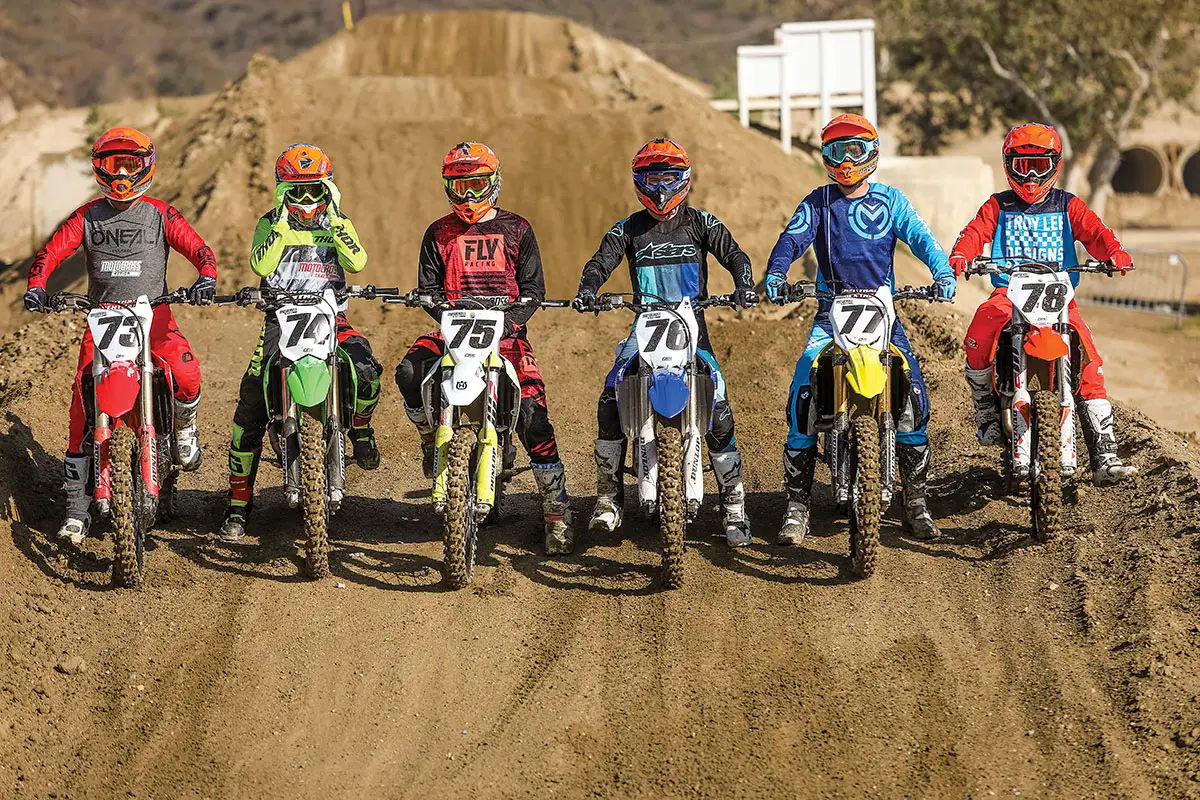

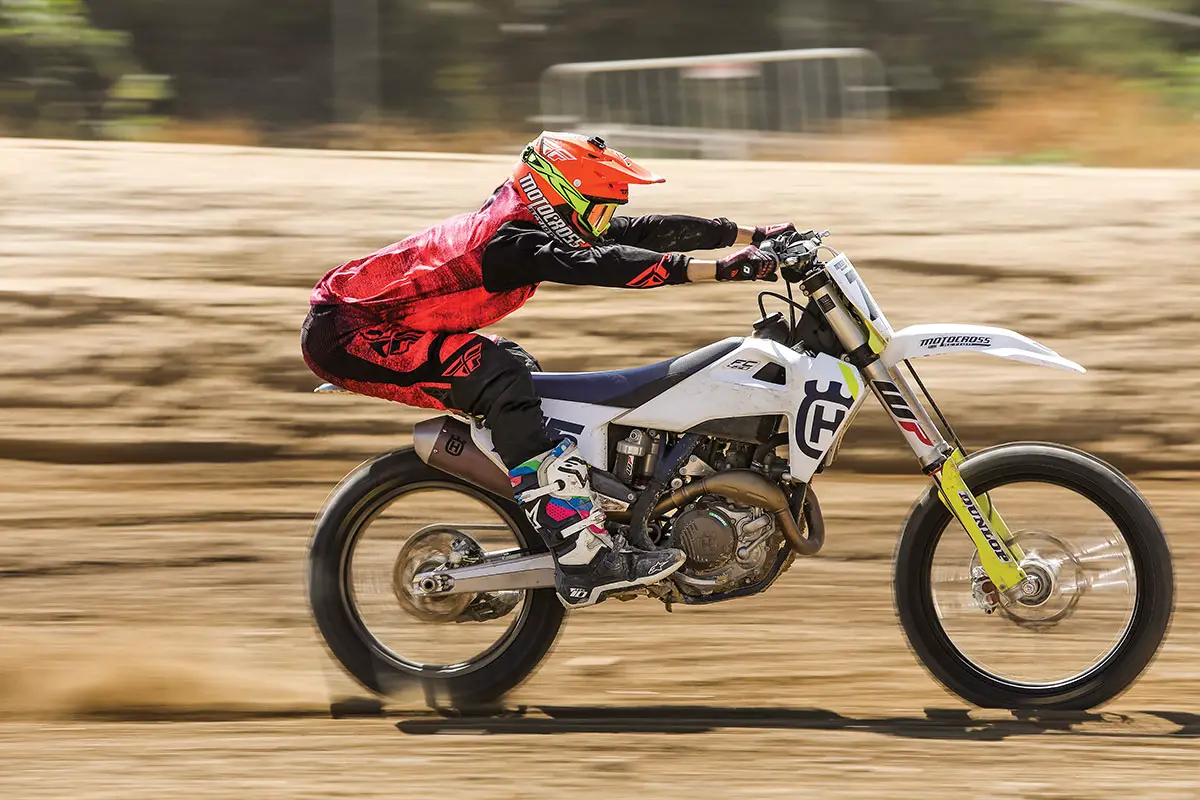

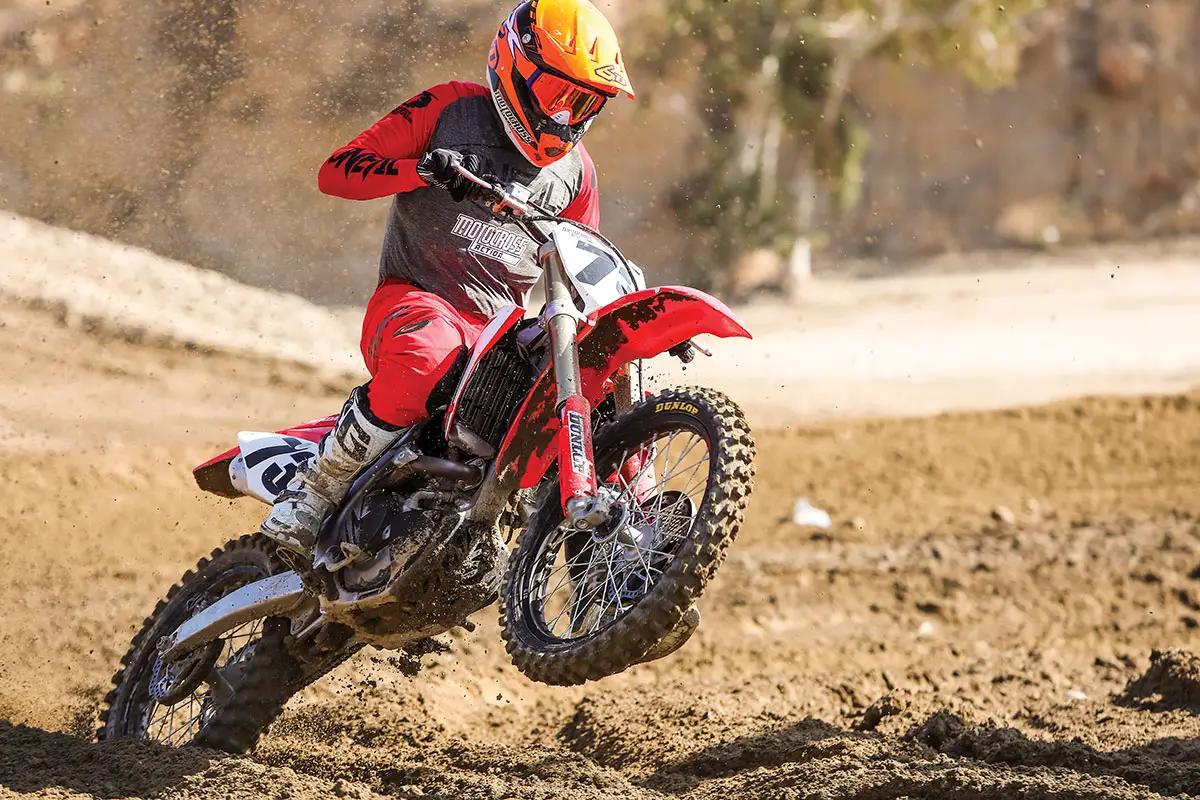
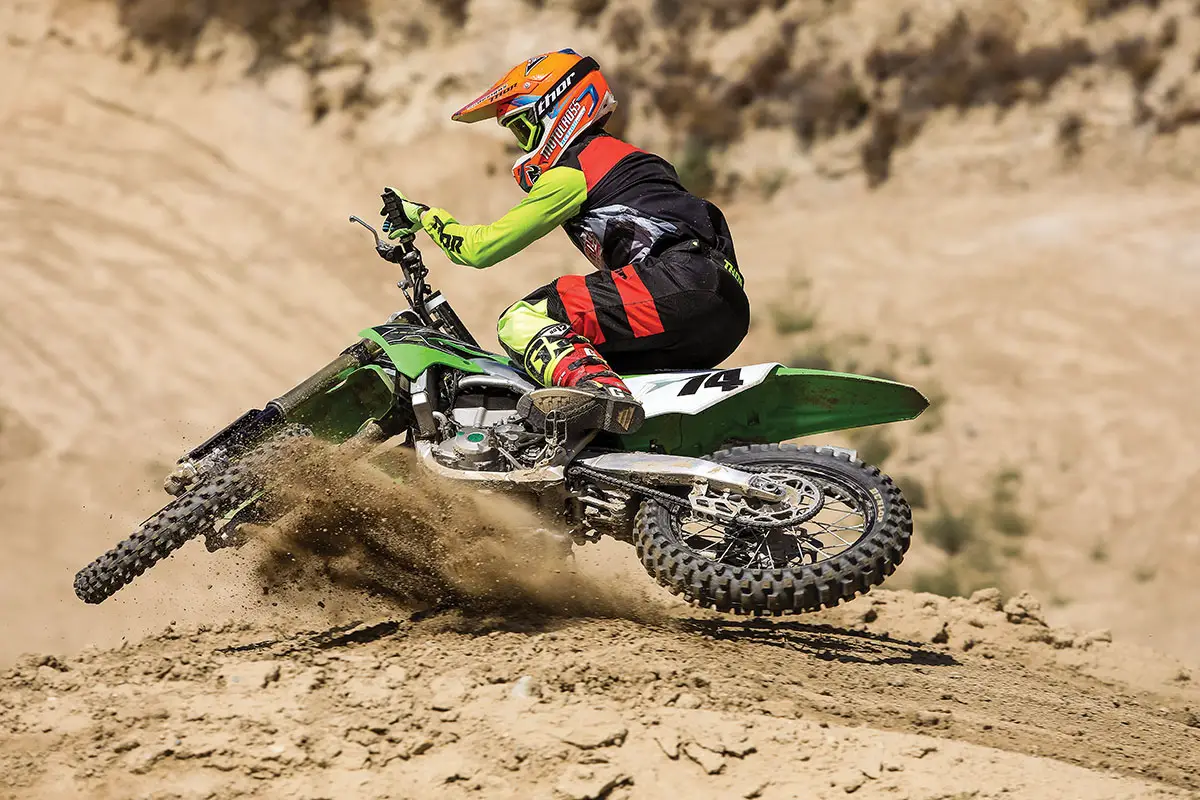
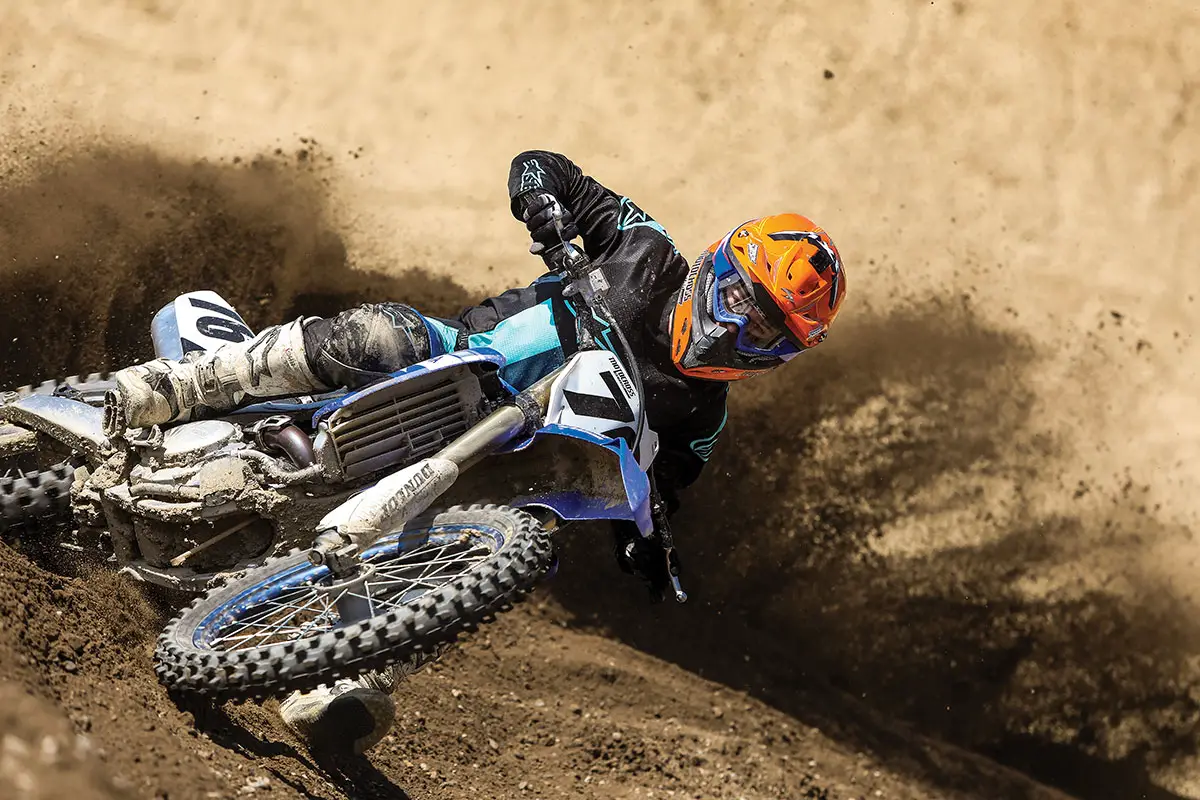

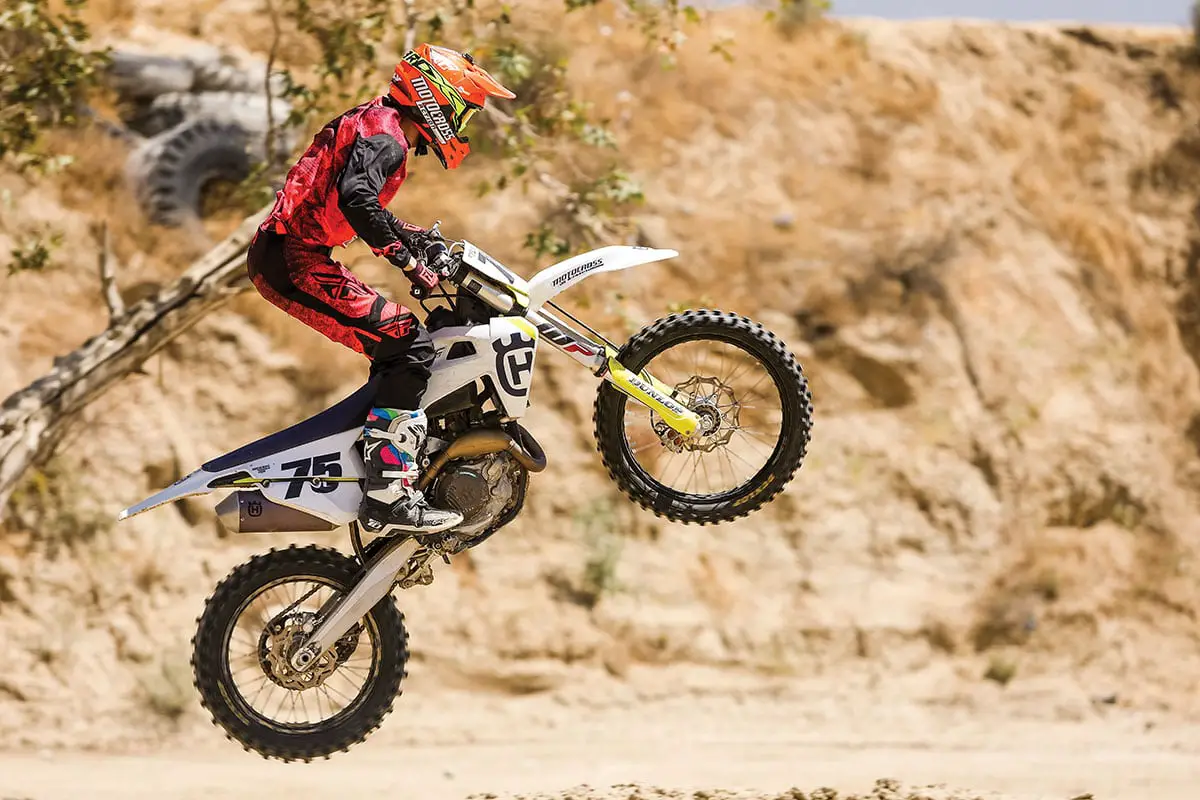

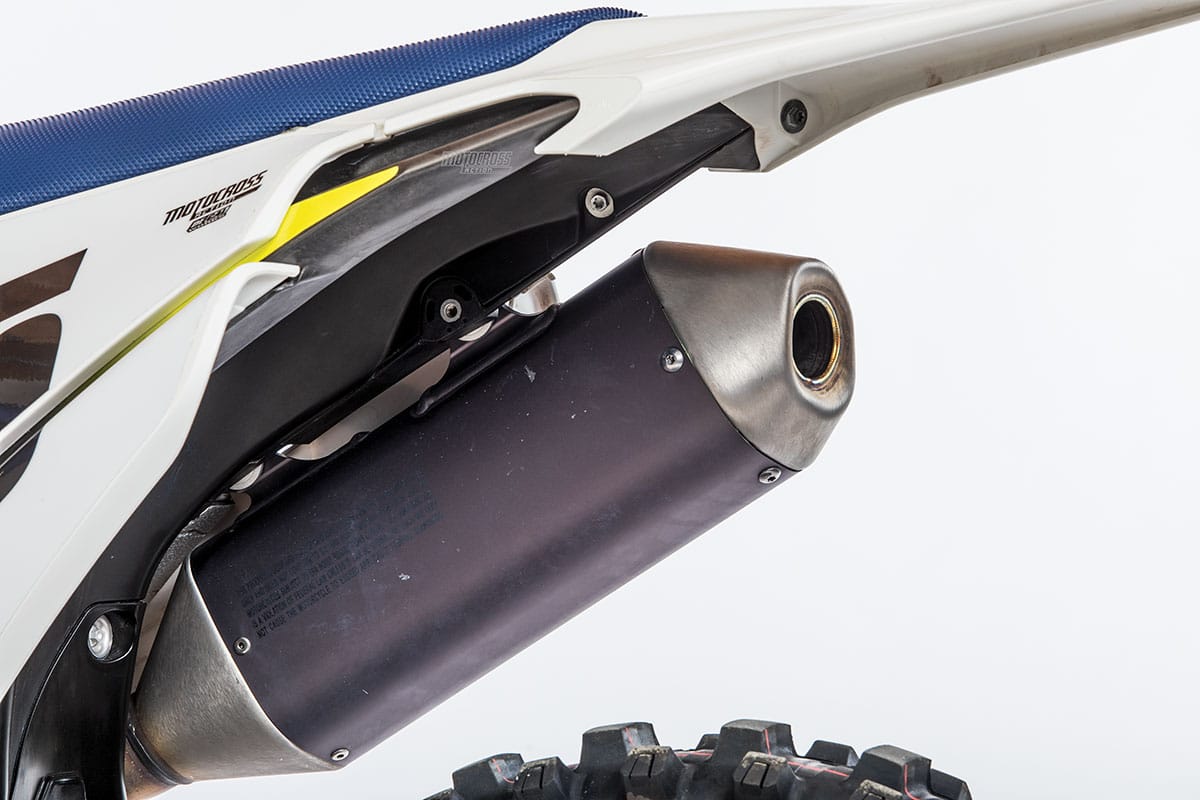

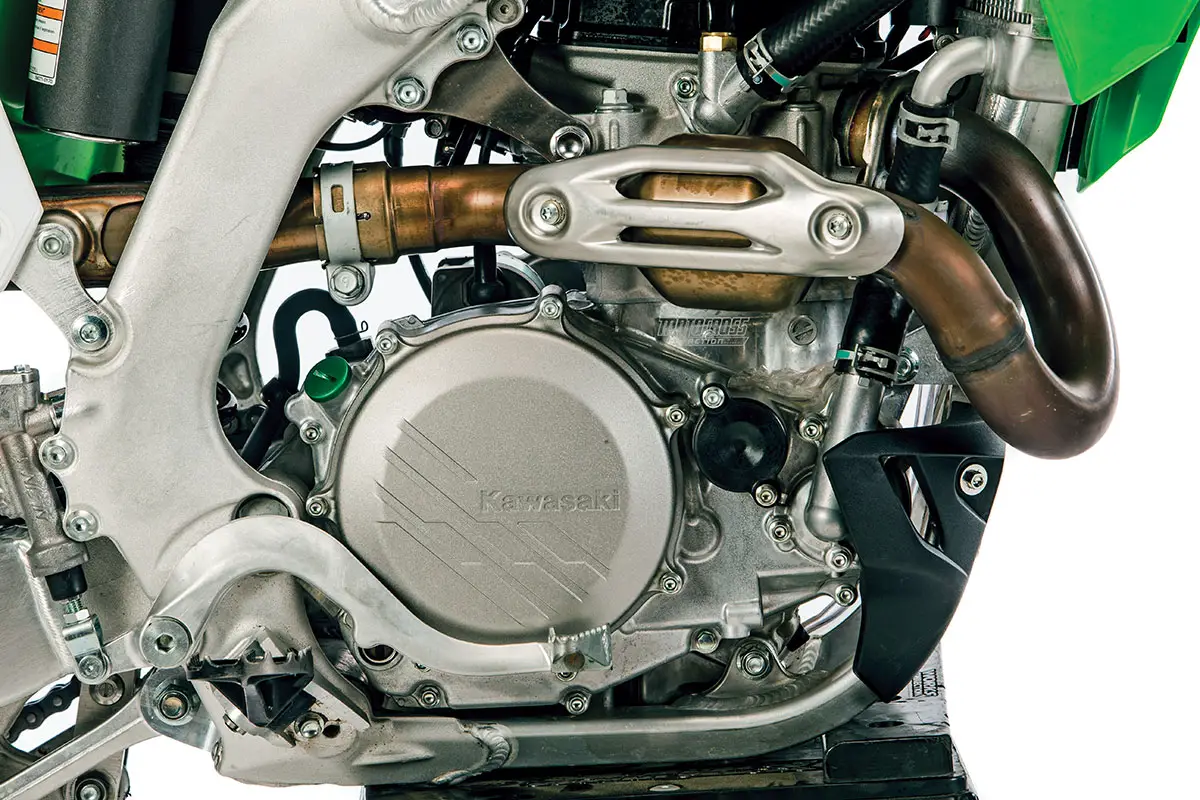
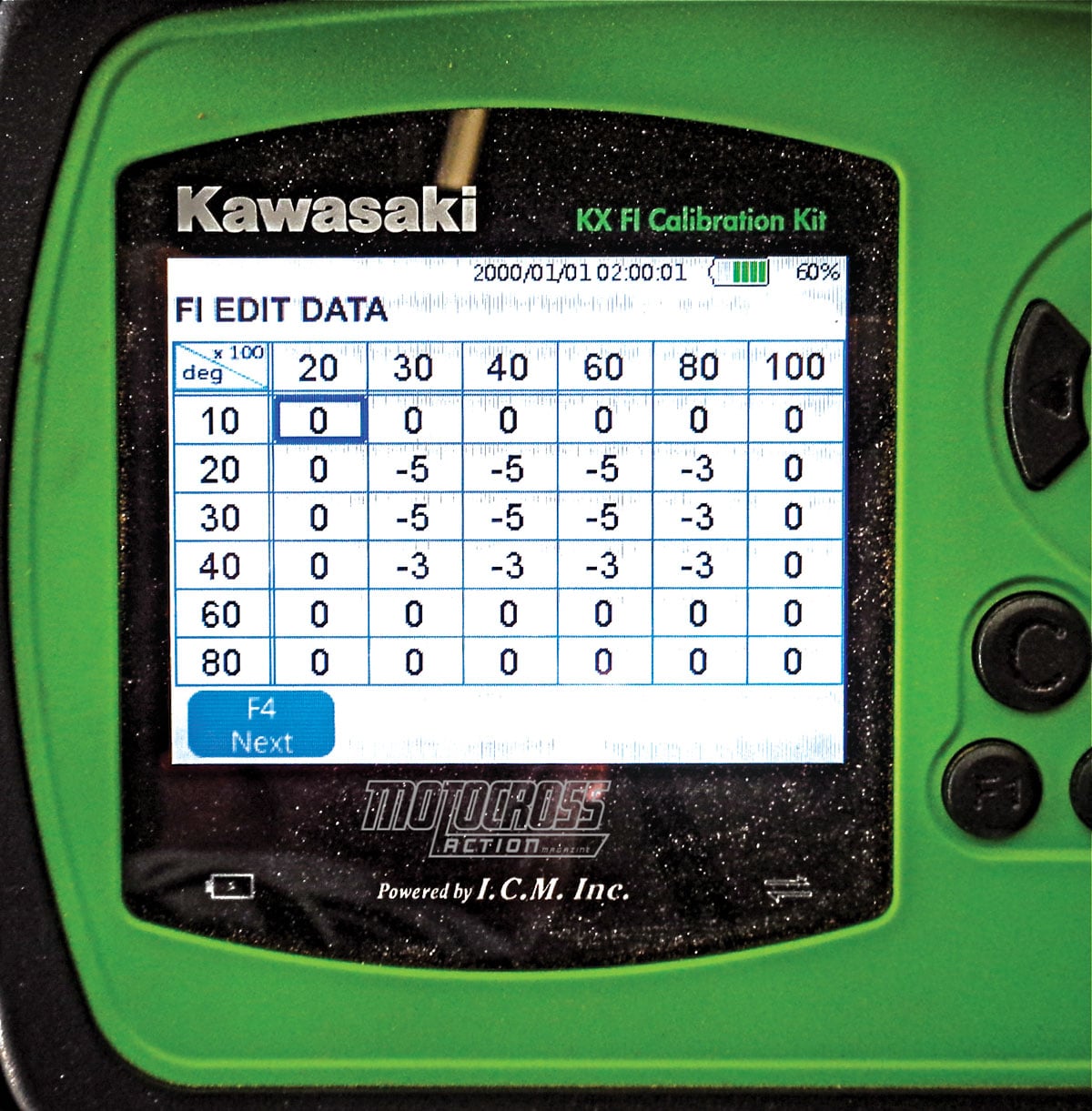
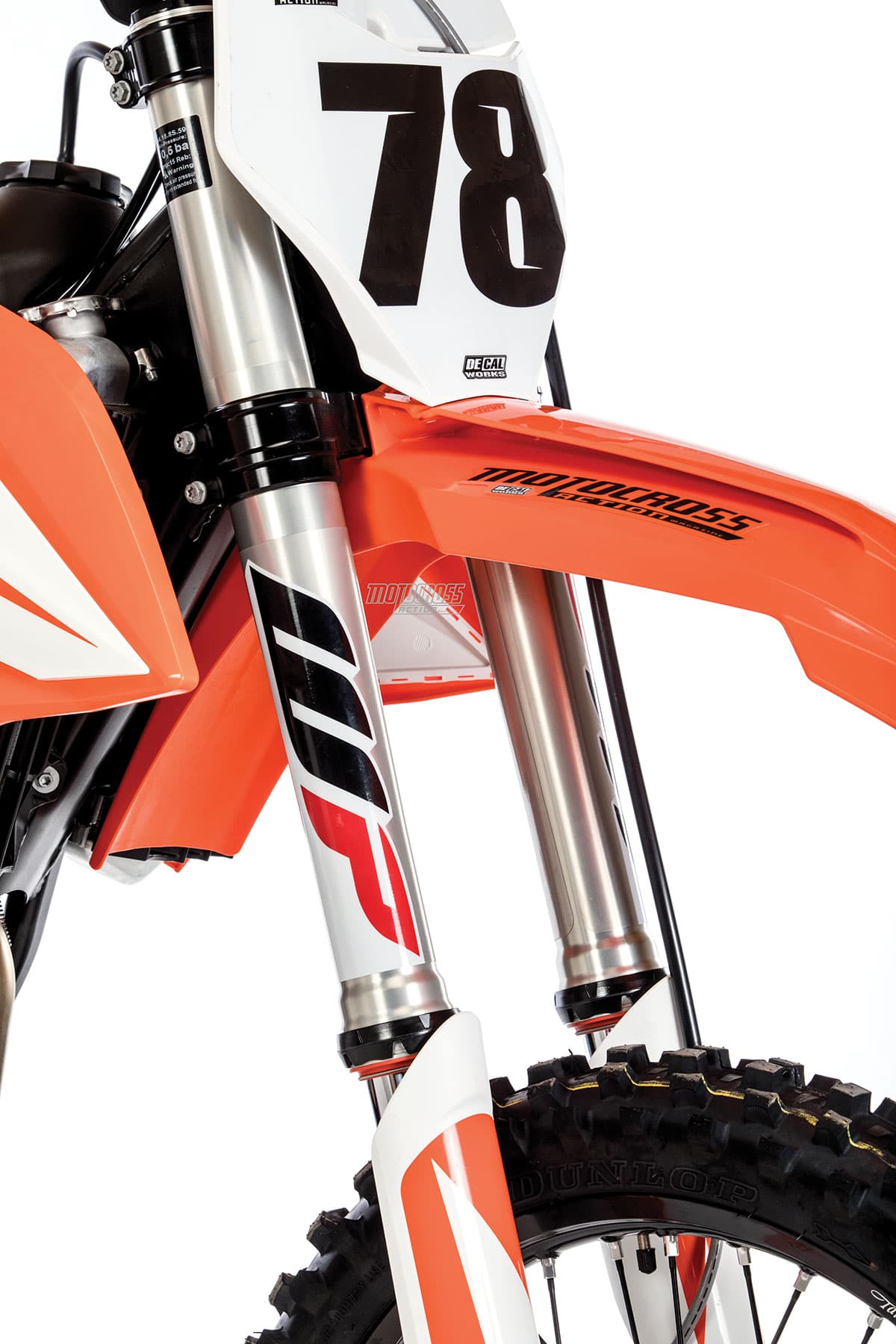

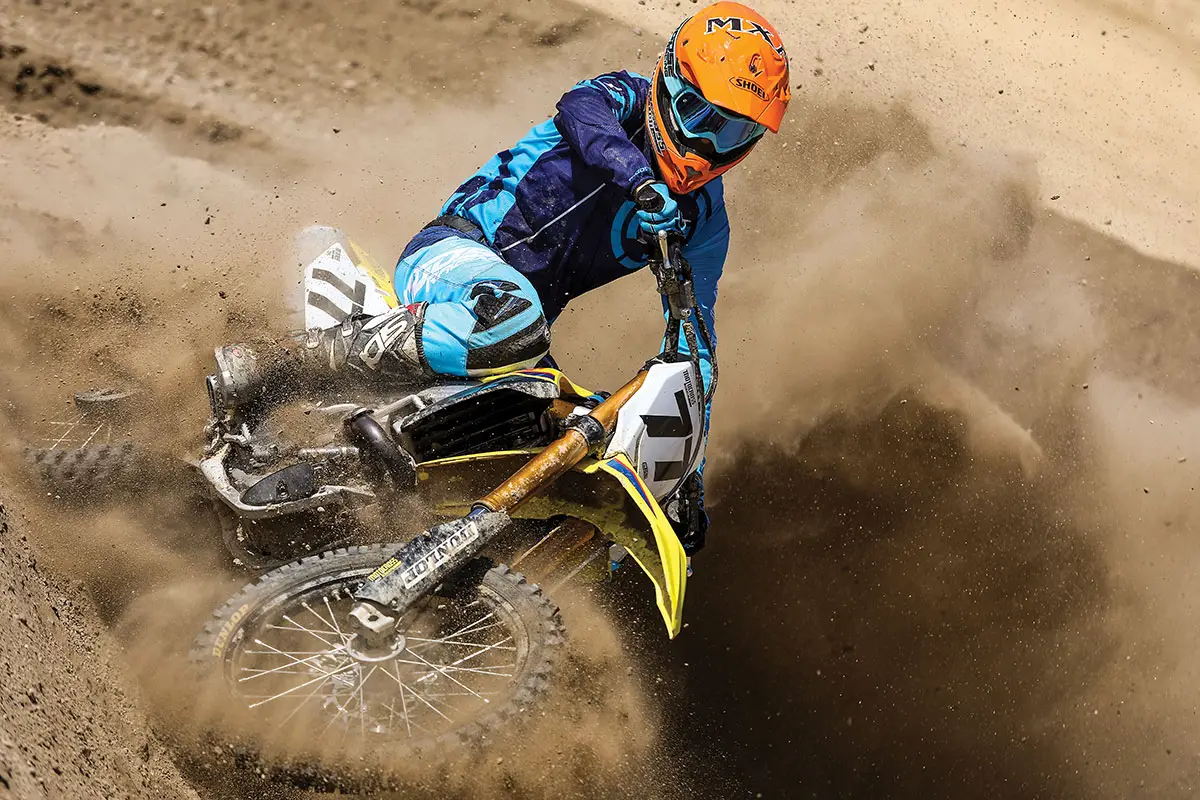
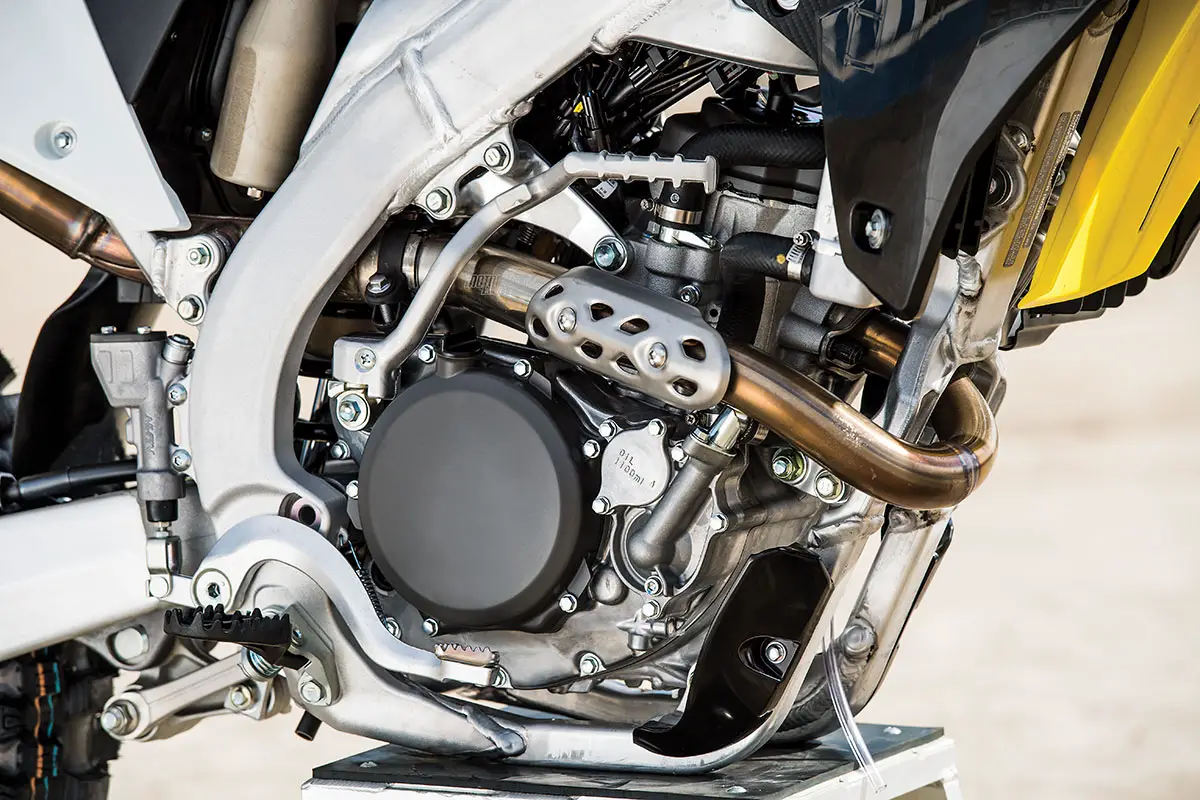

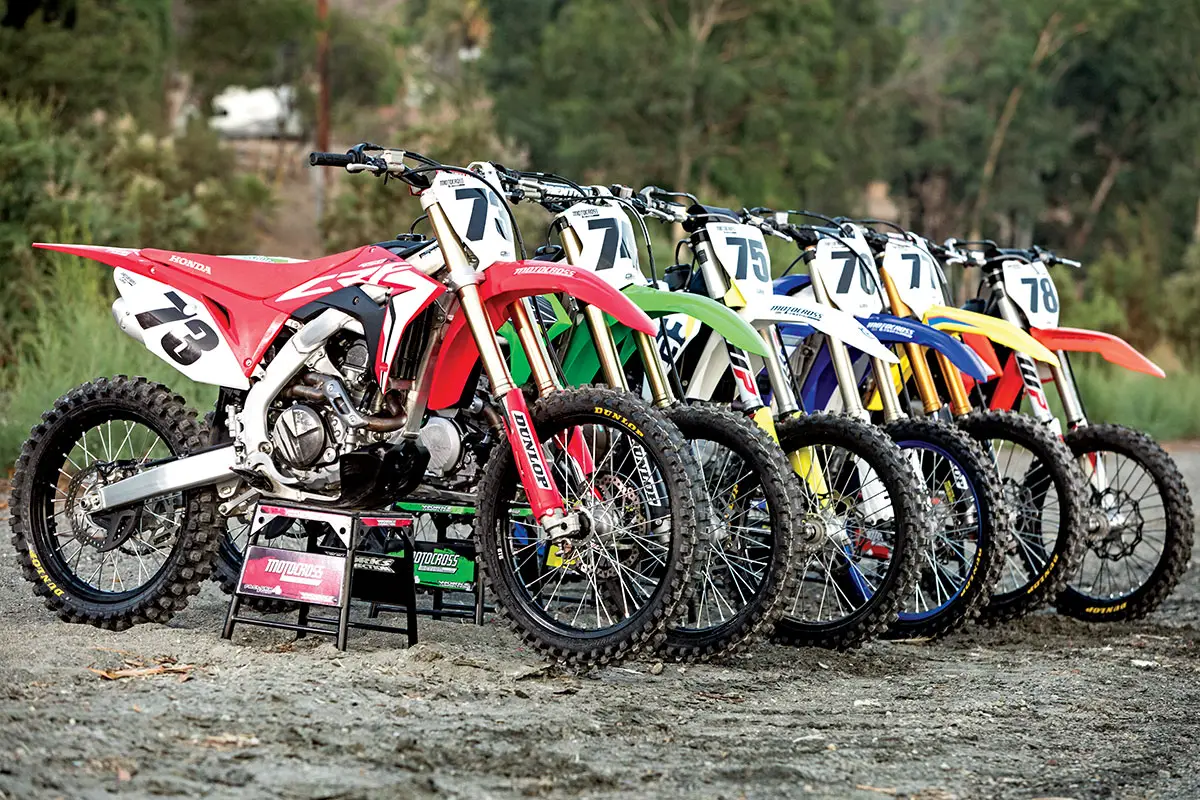
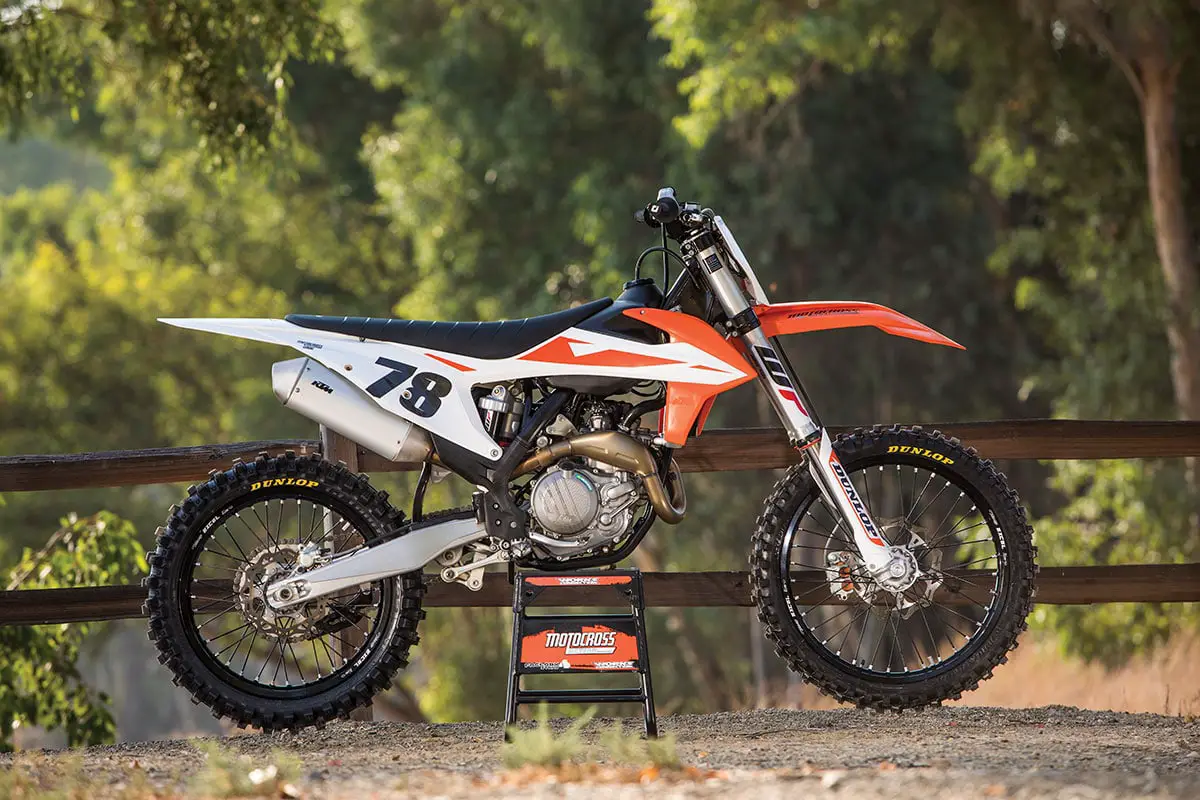



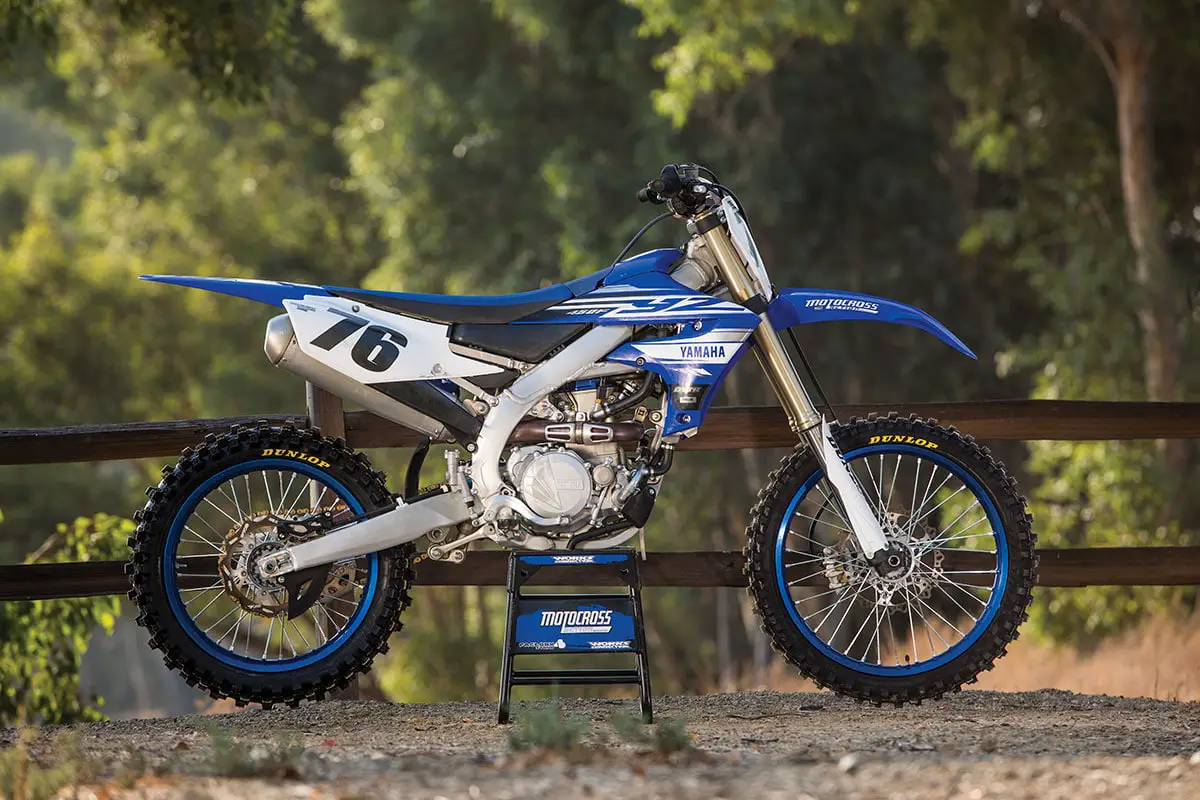
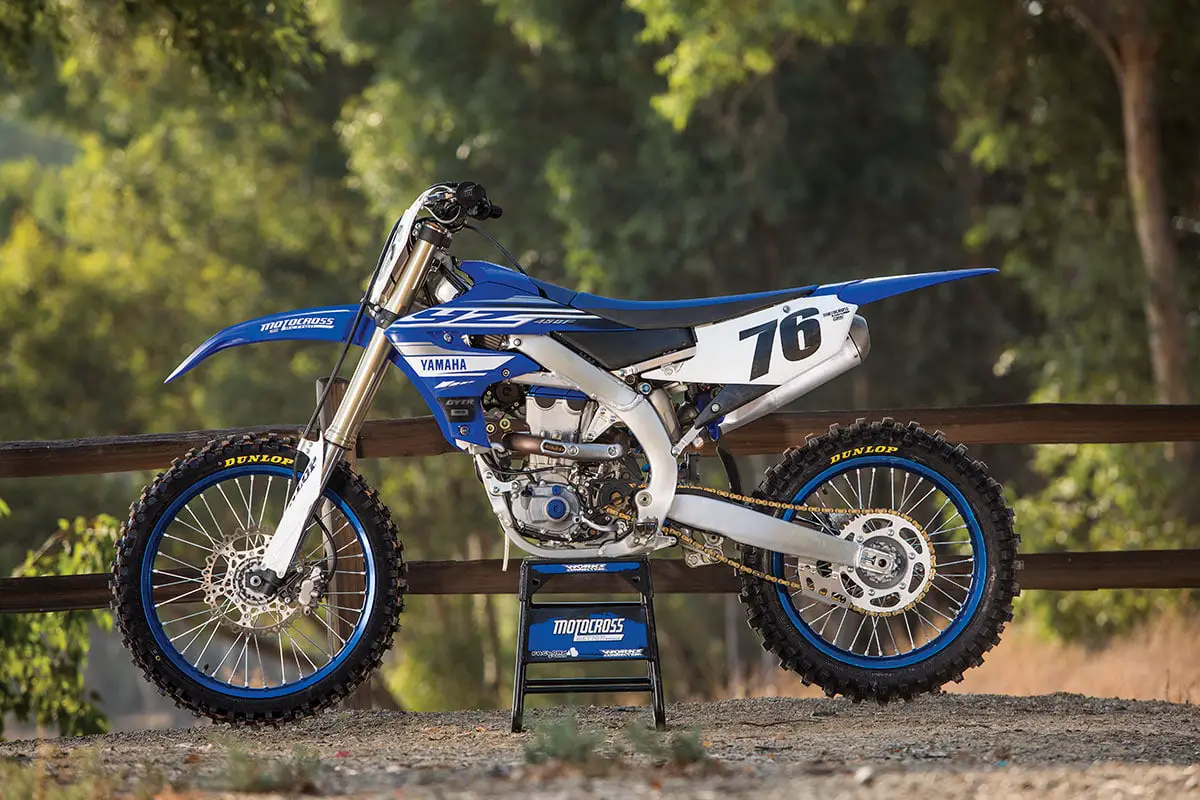
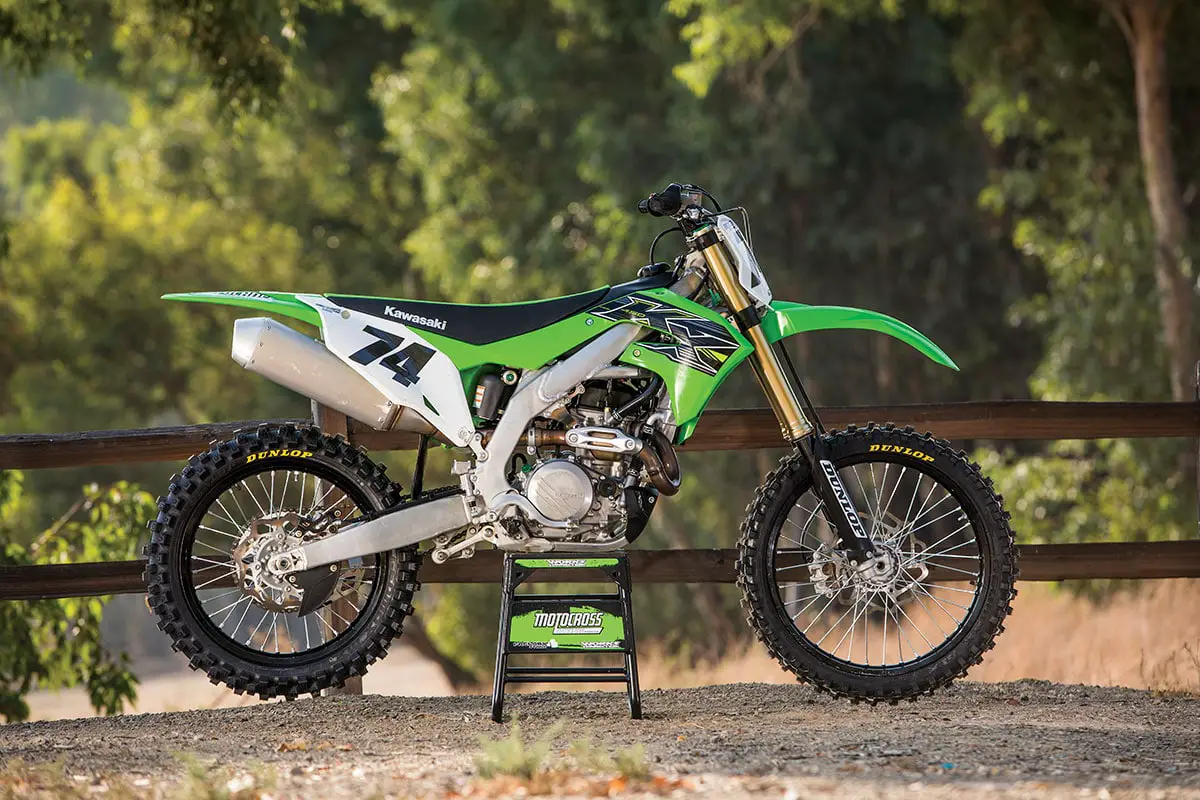
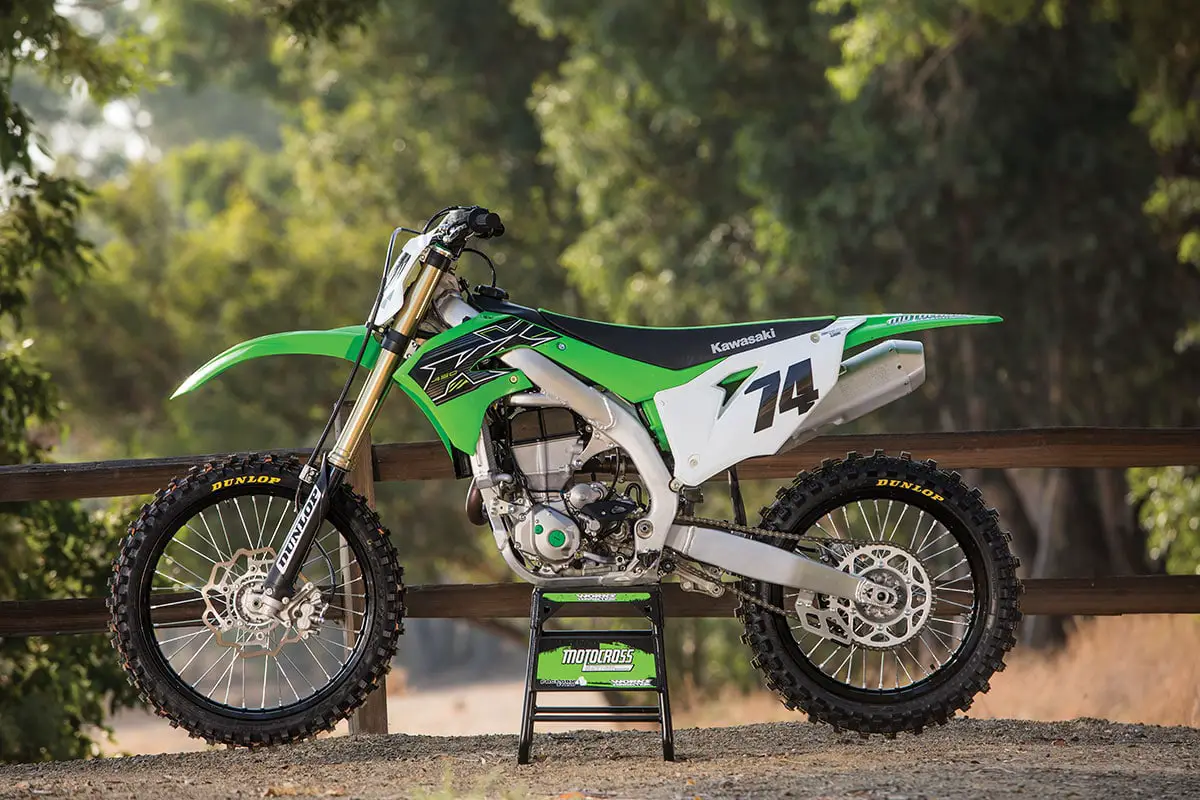

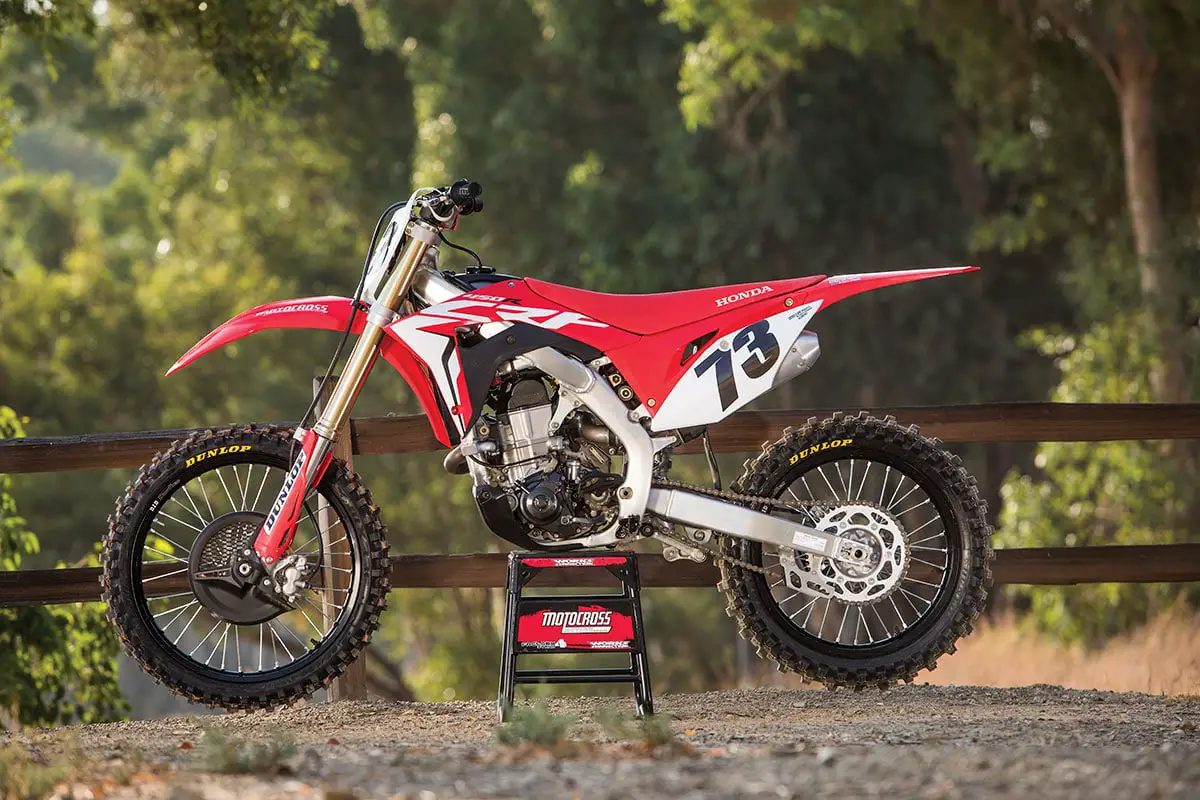
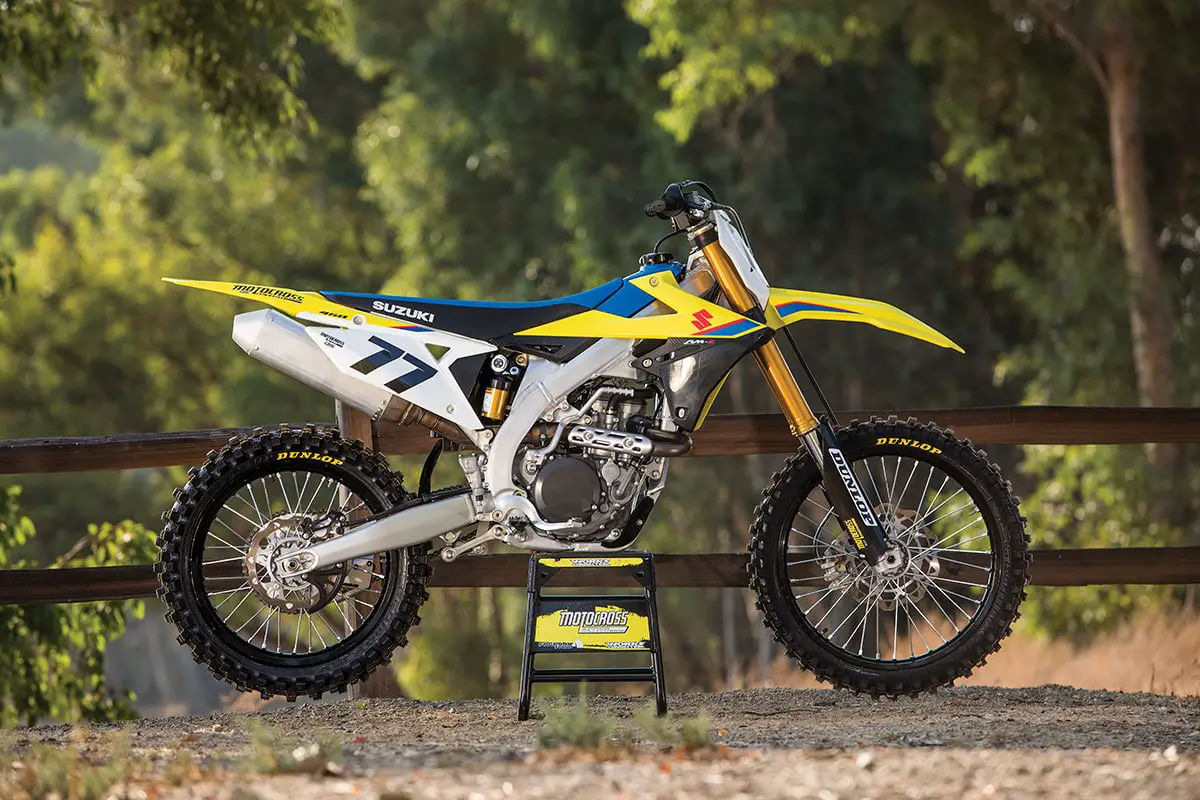
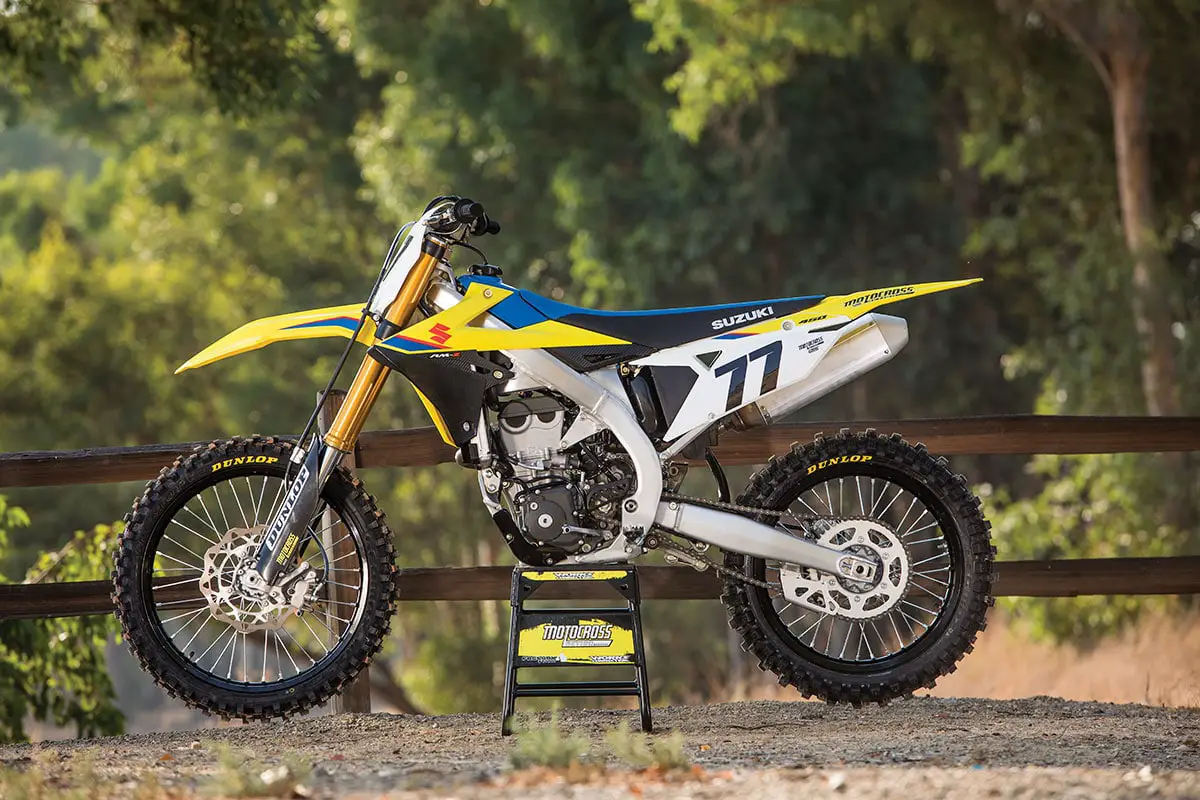

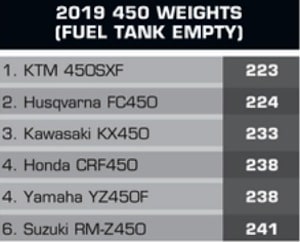
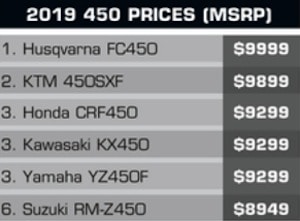
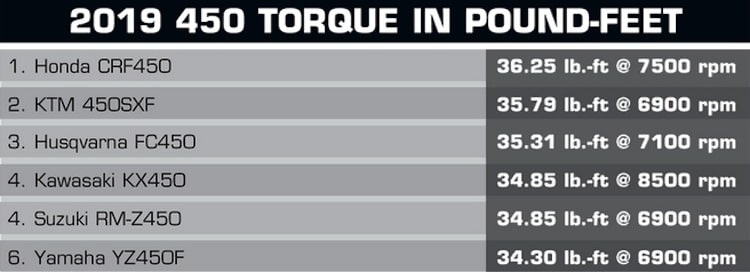



Comments are closed.